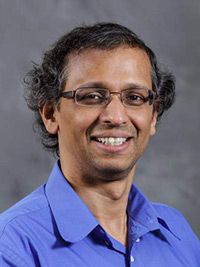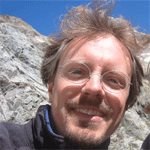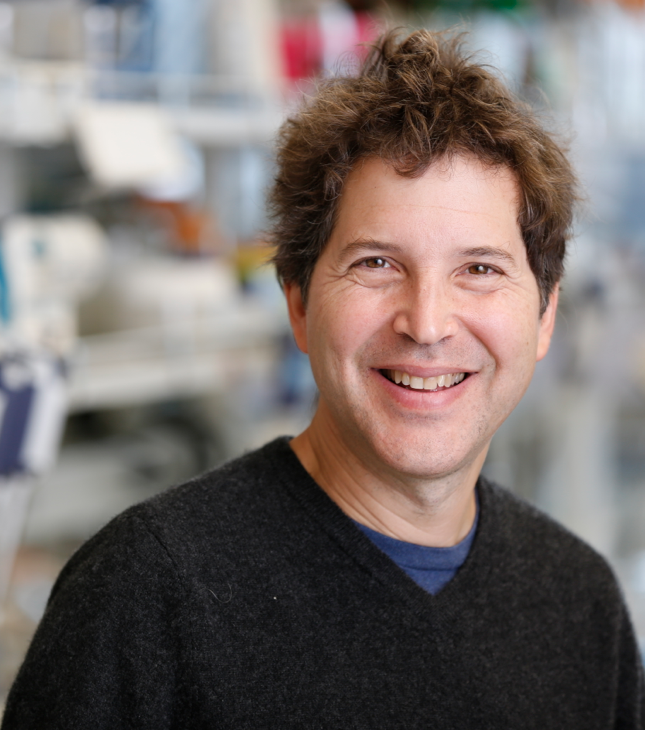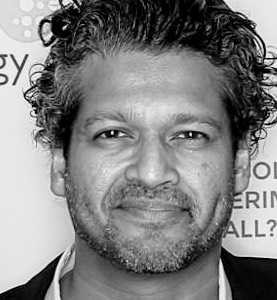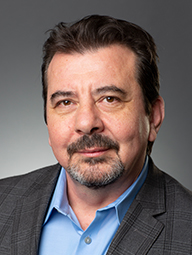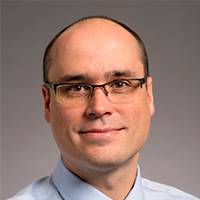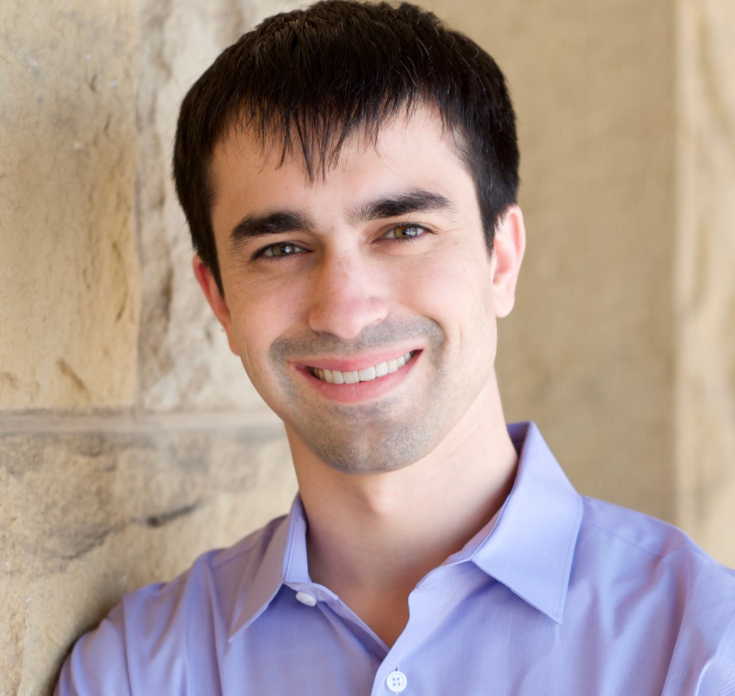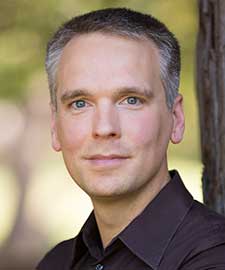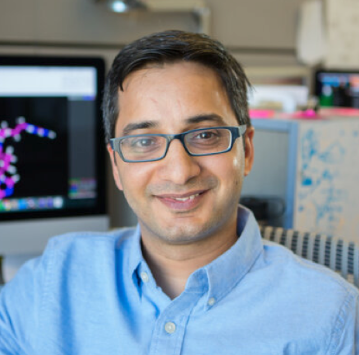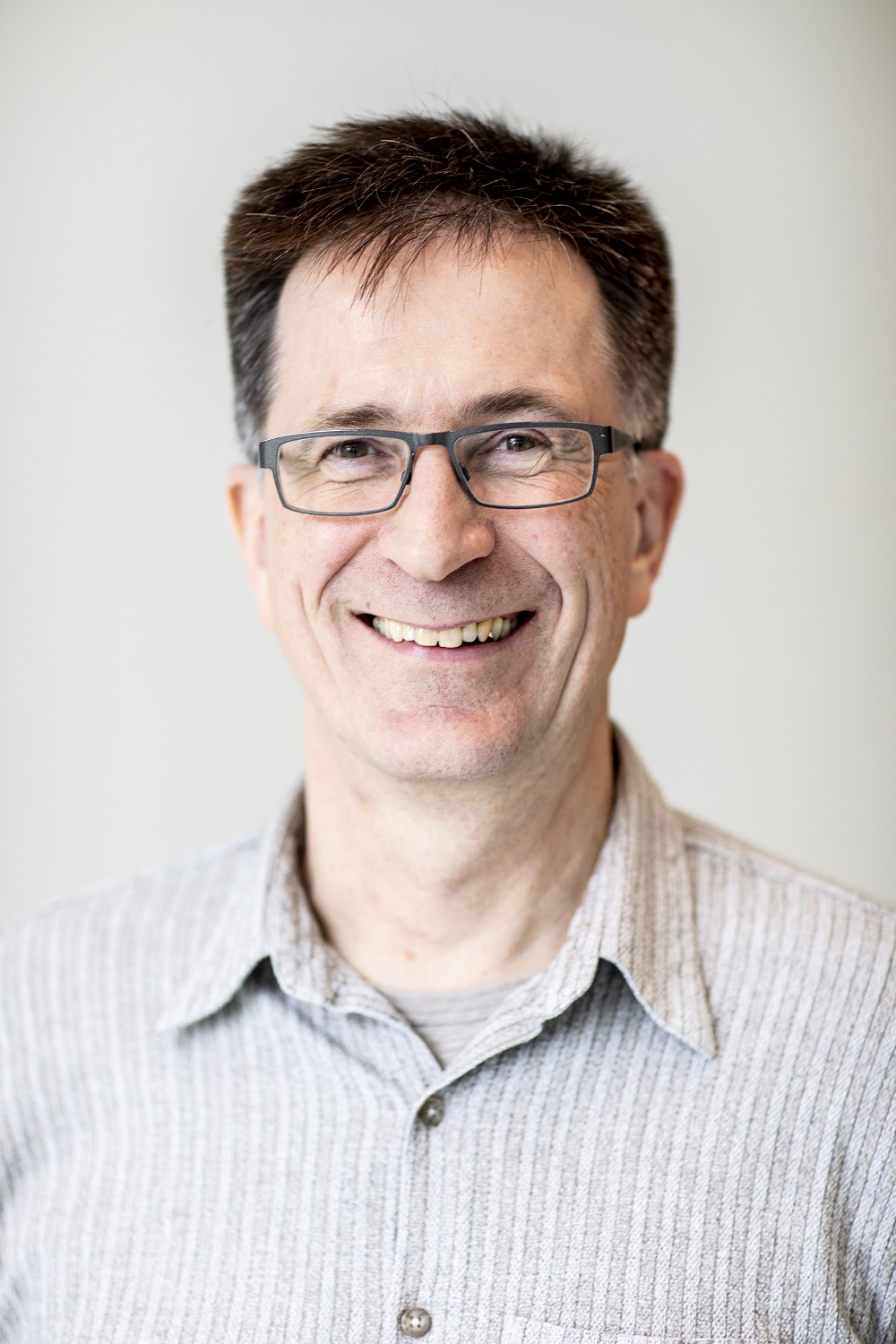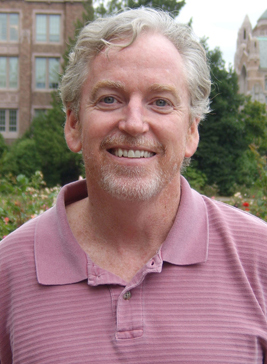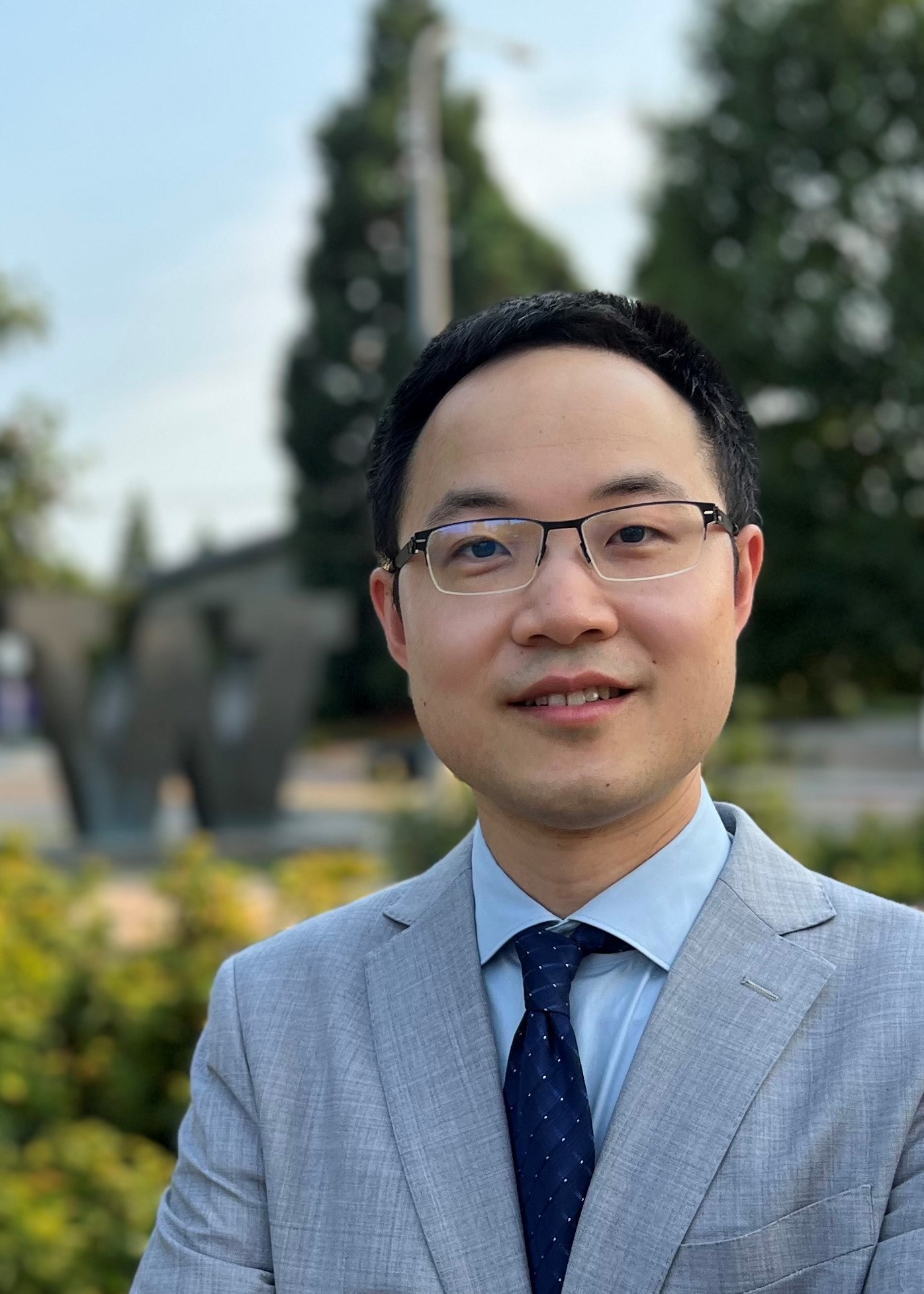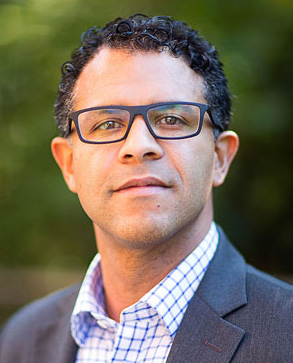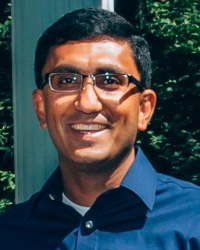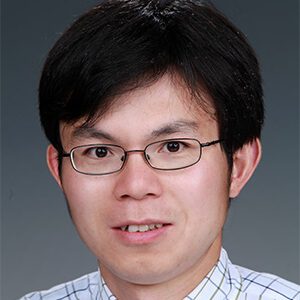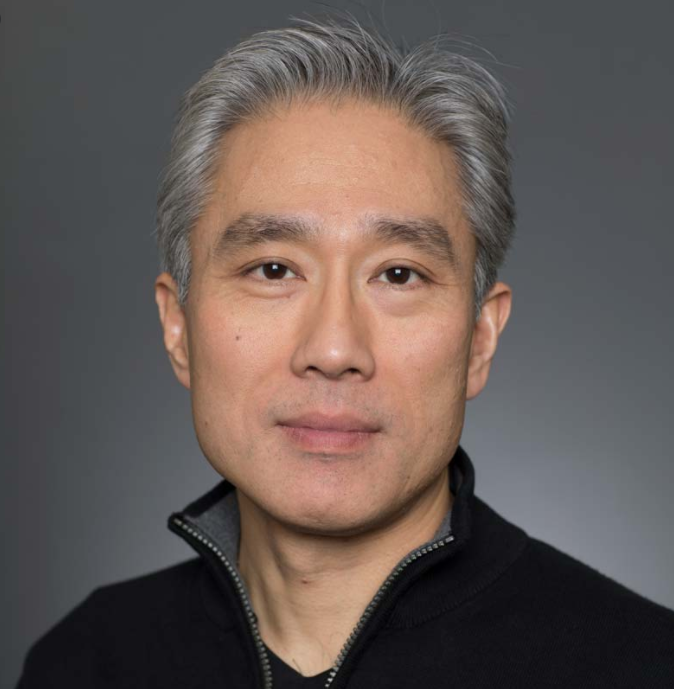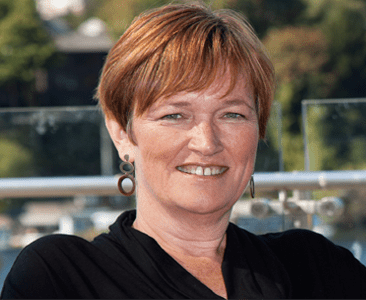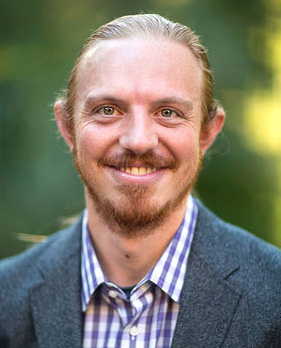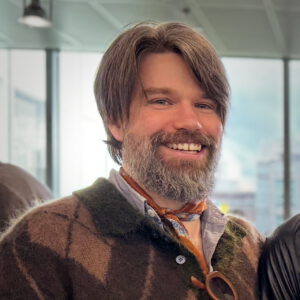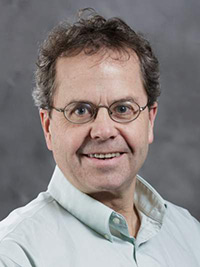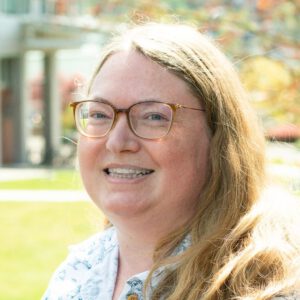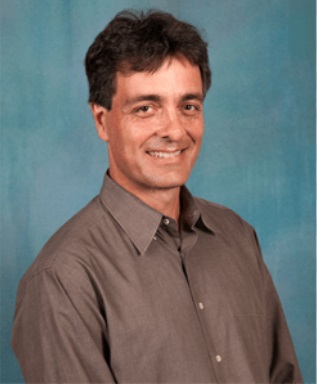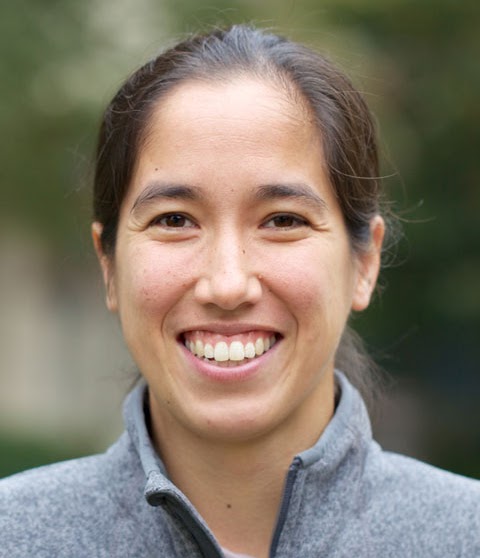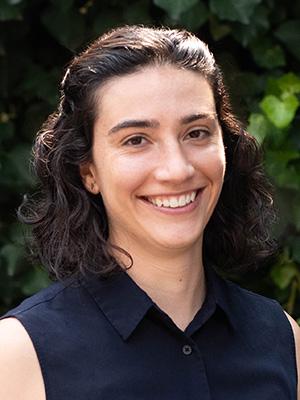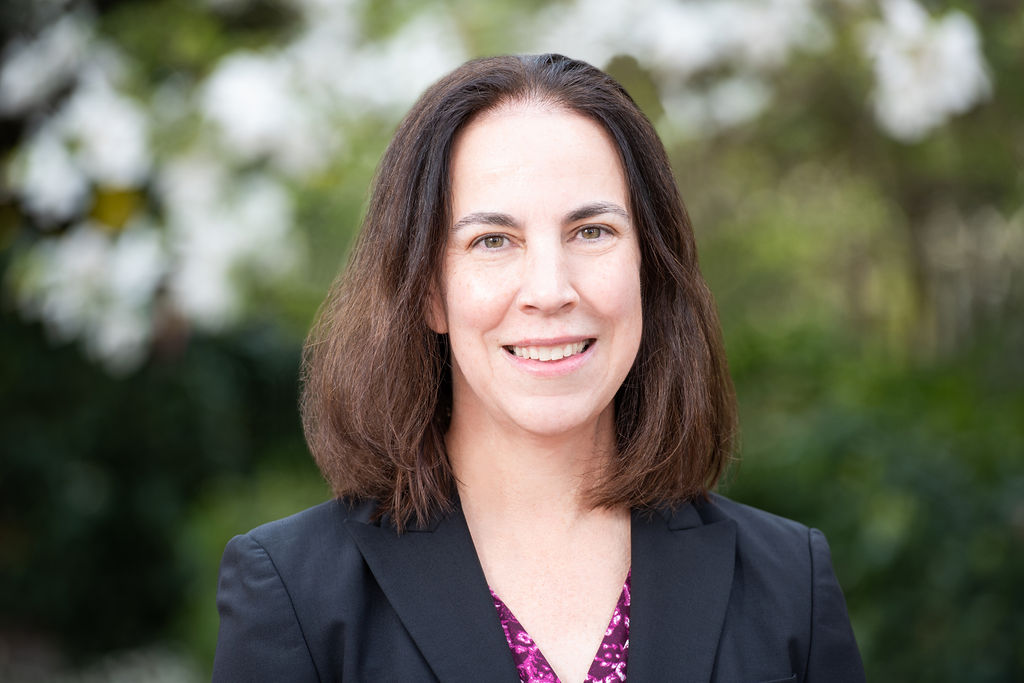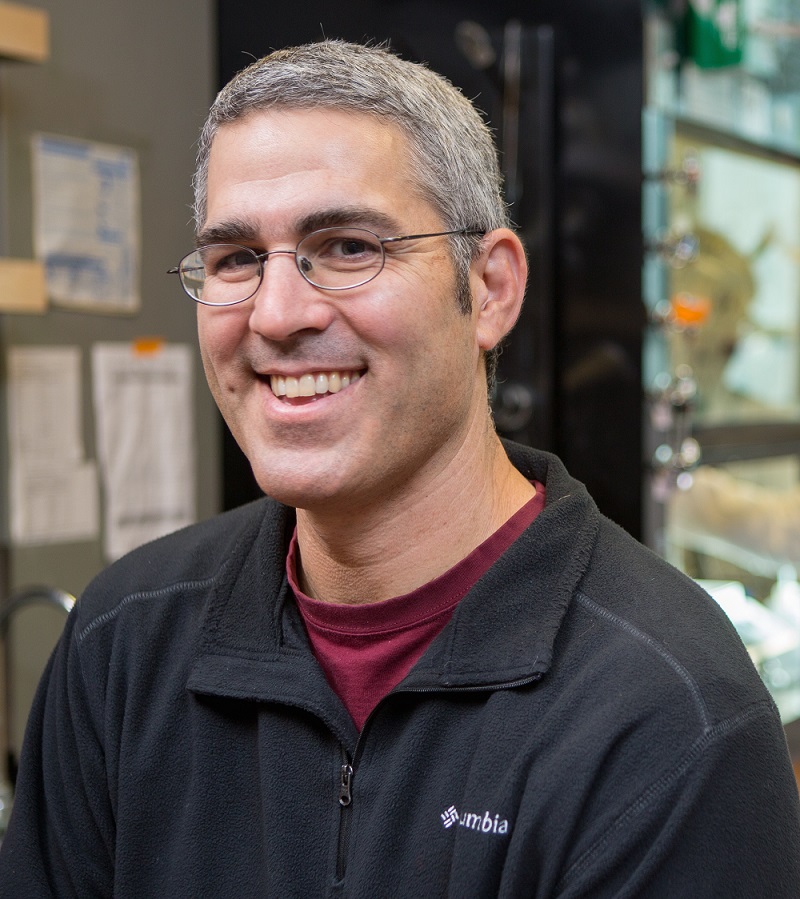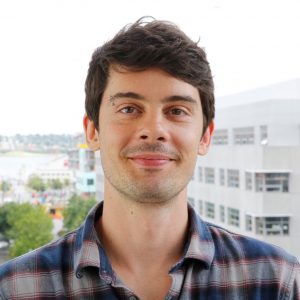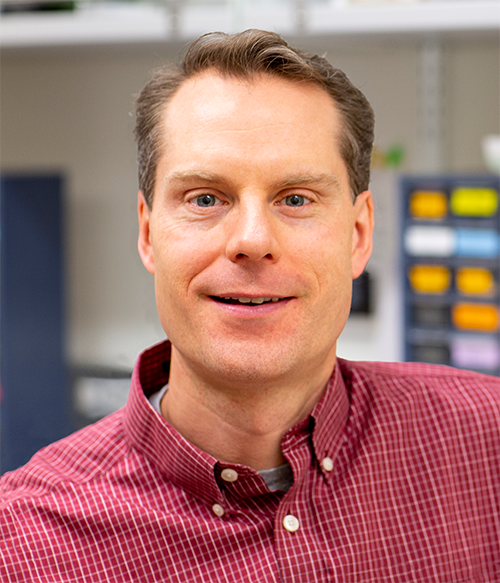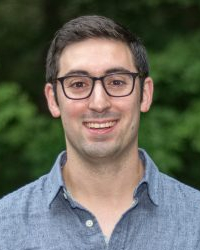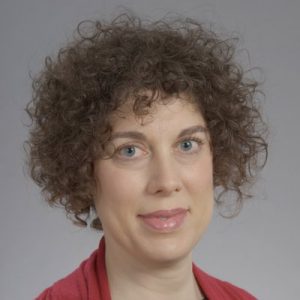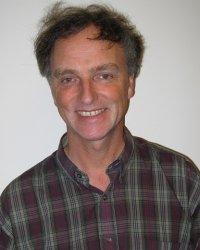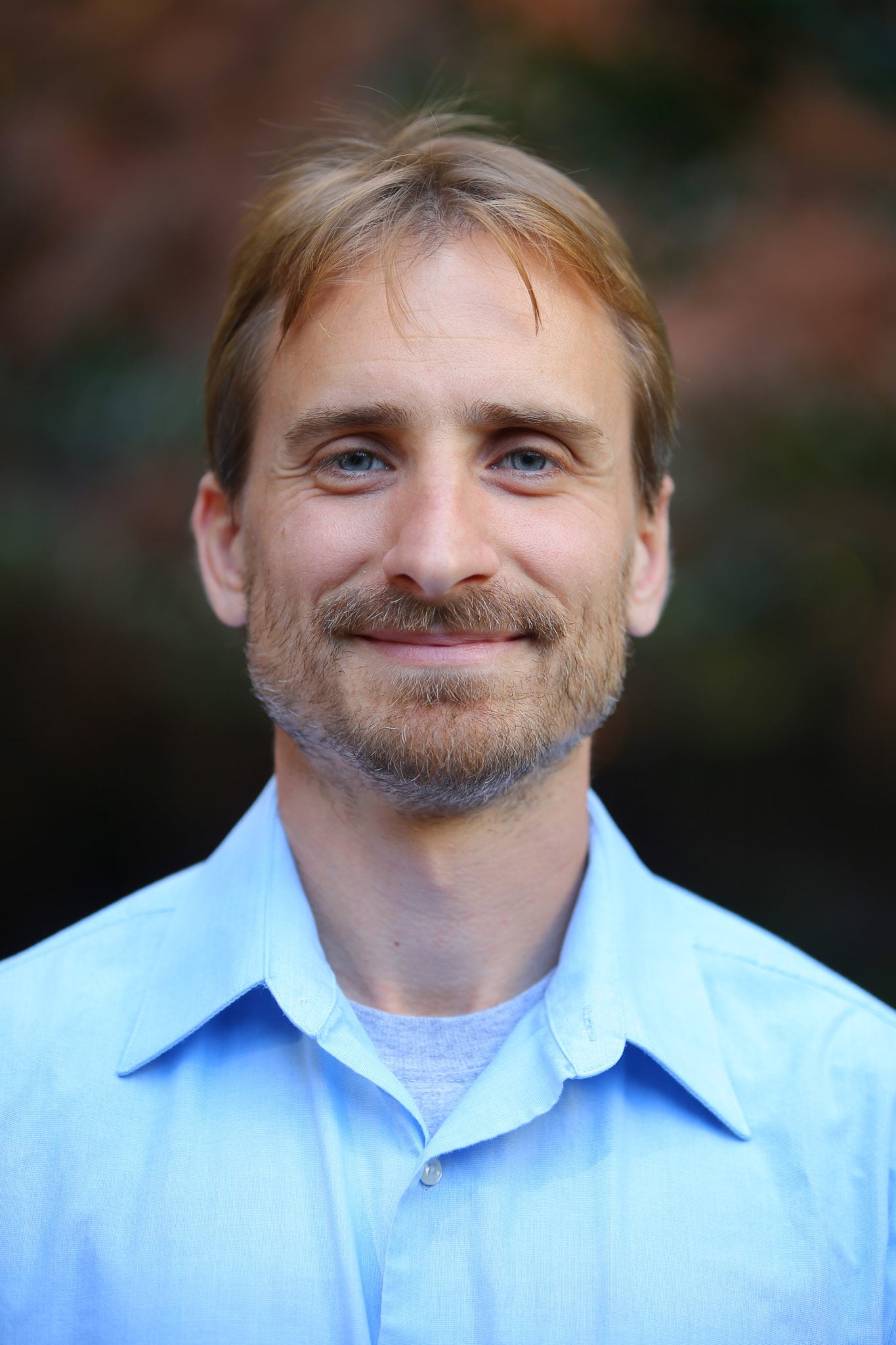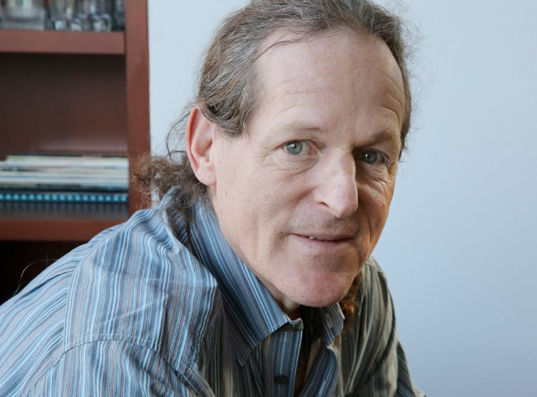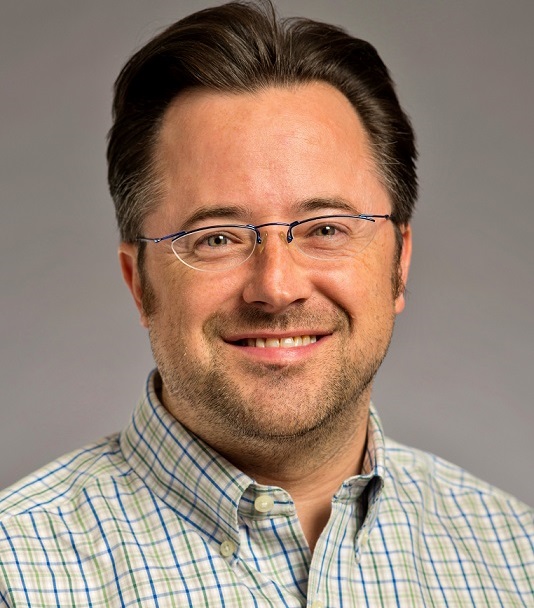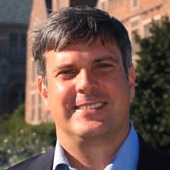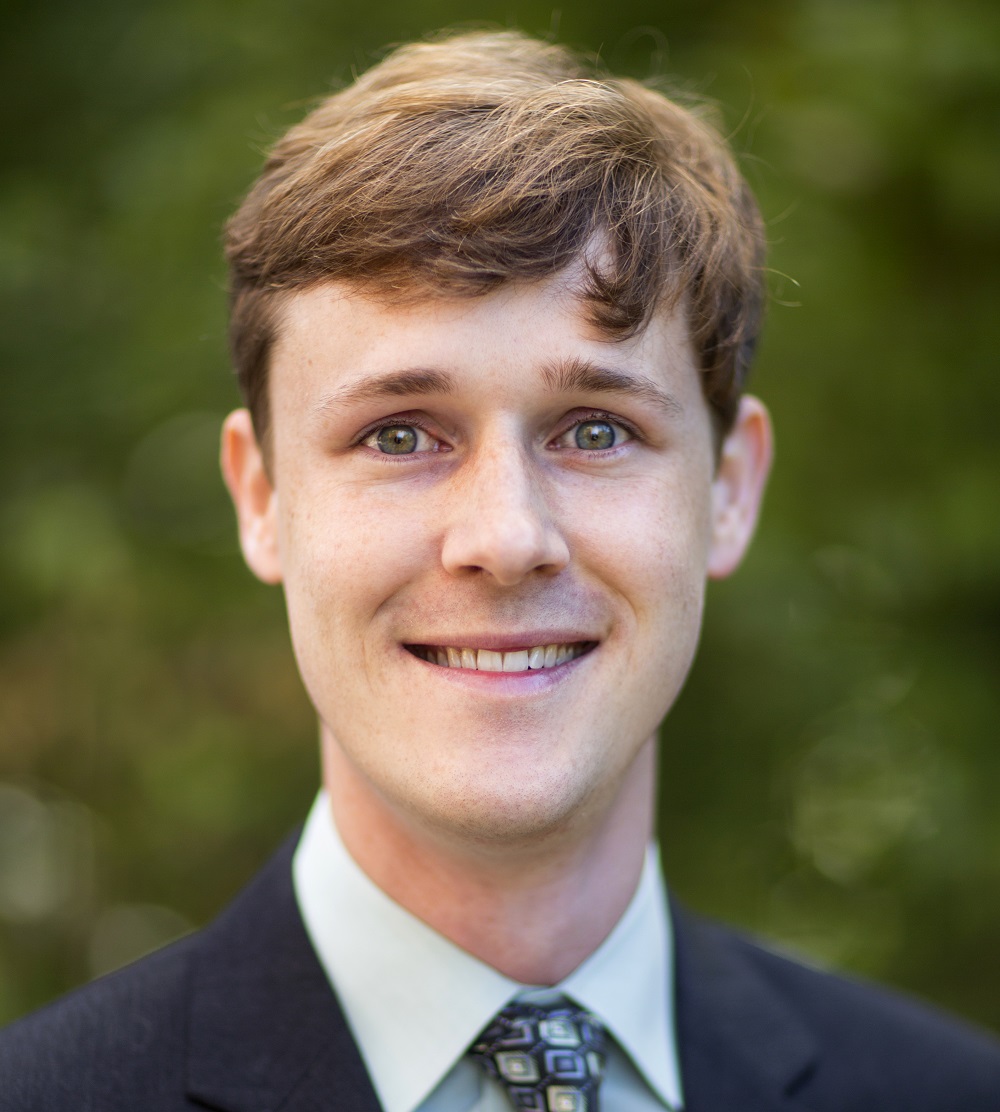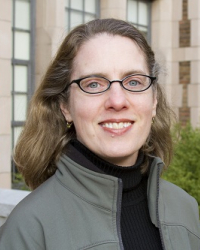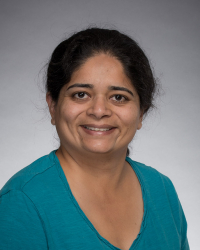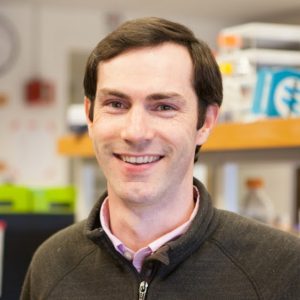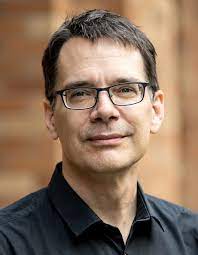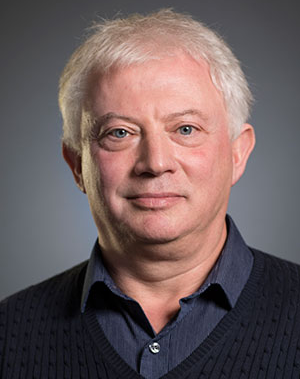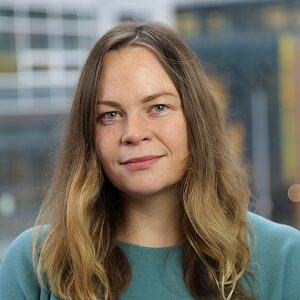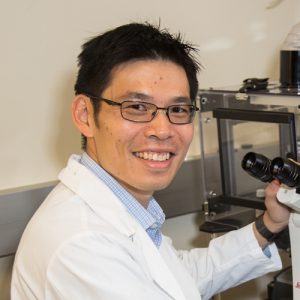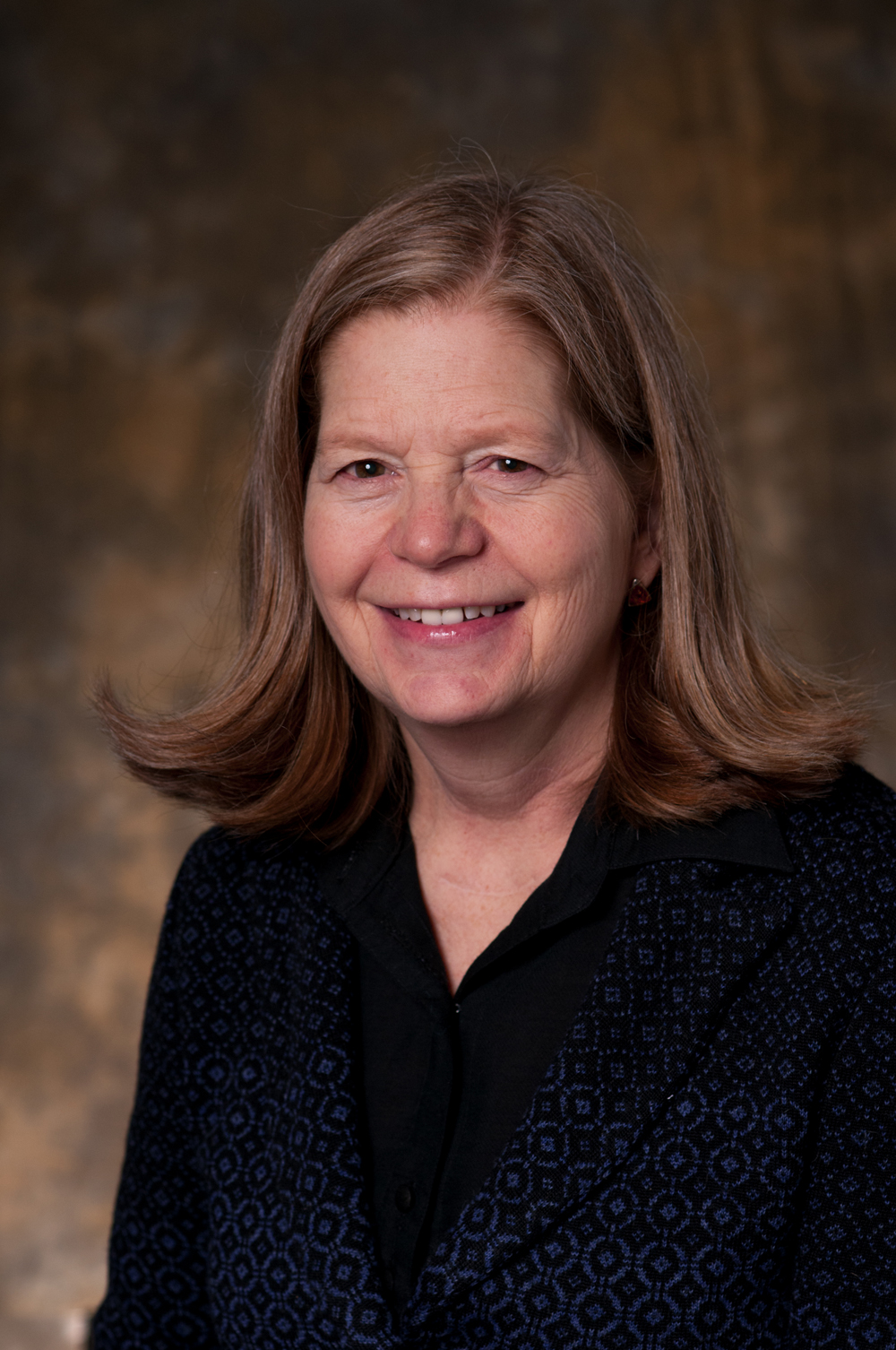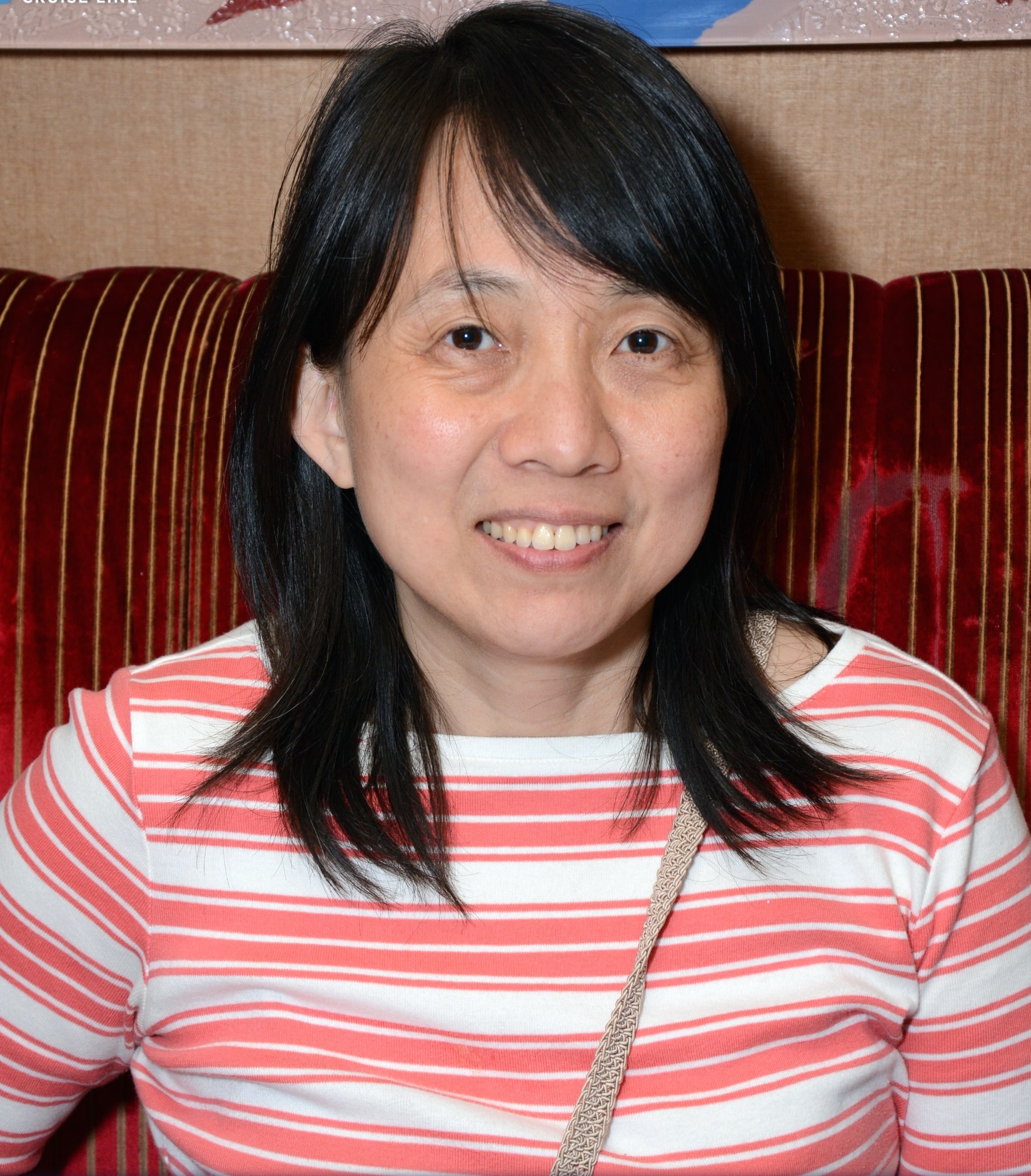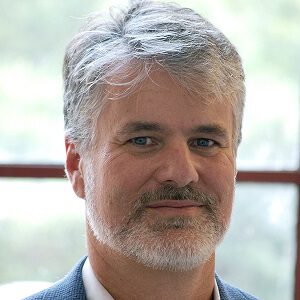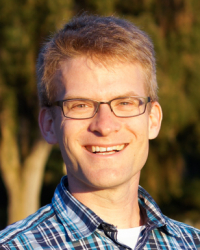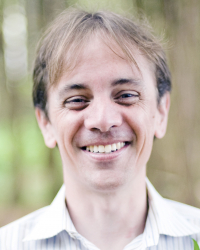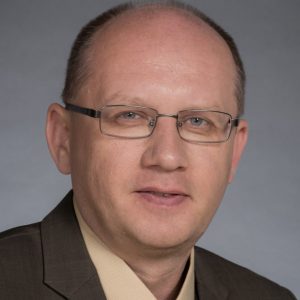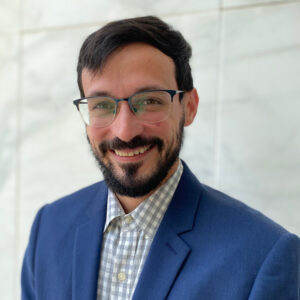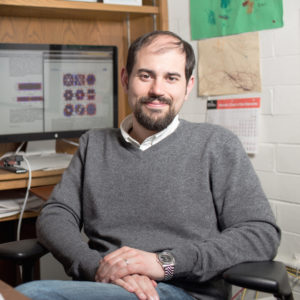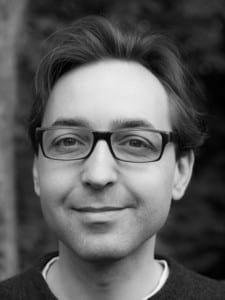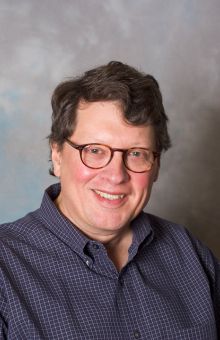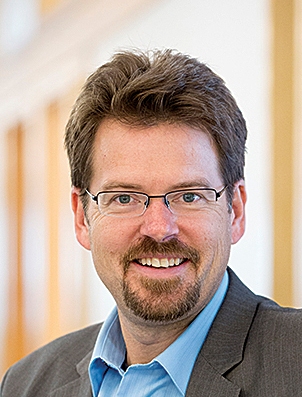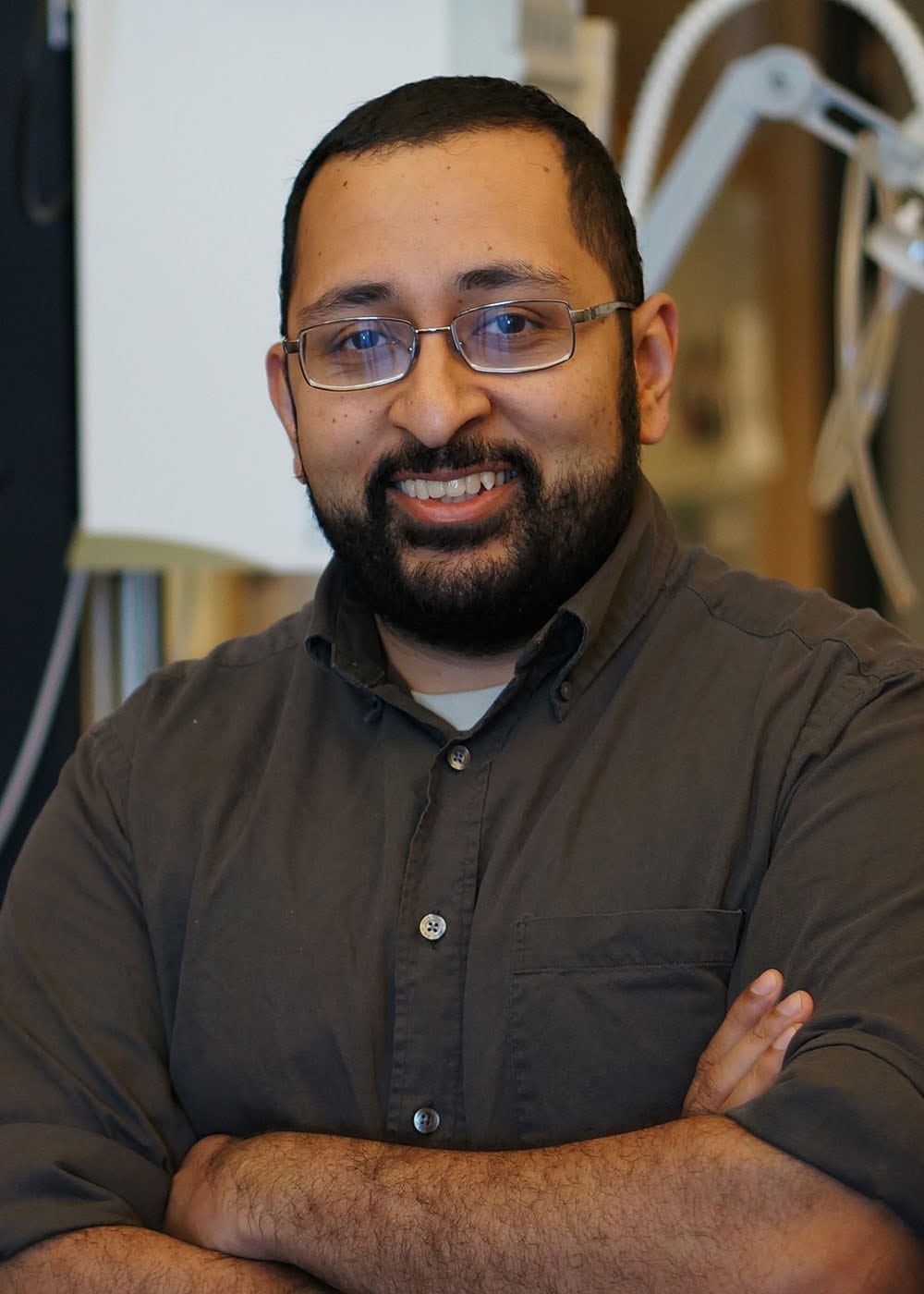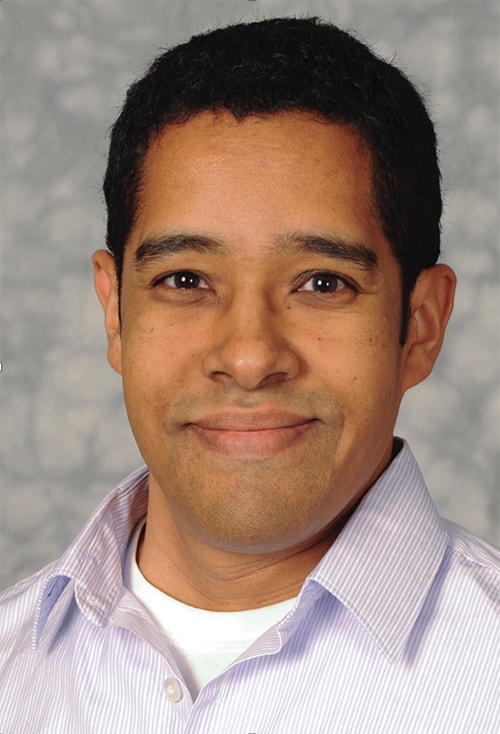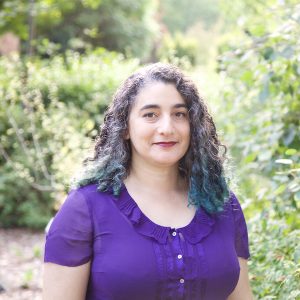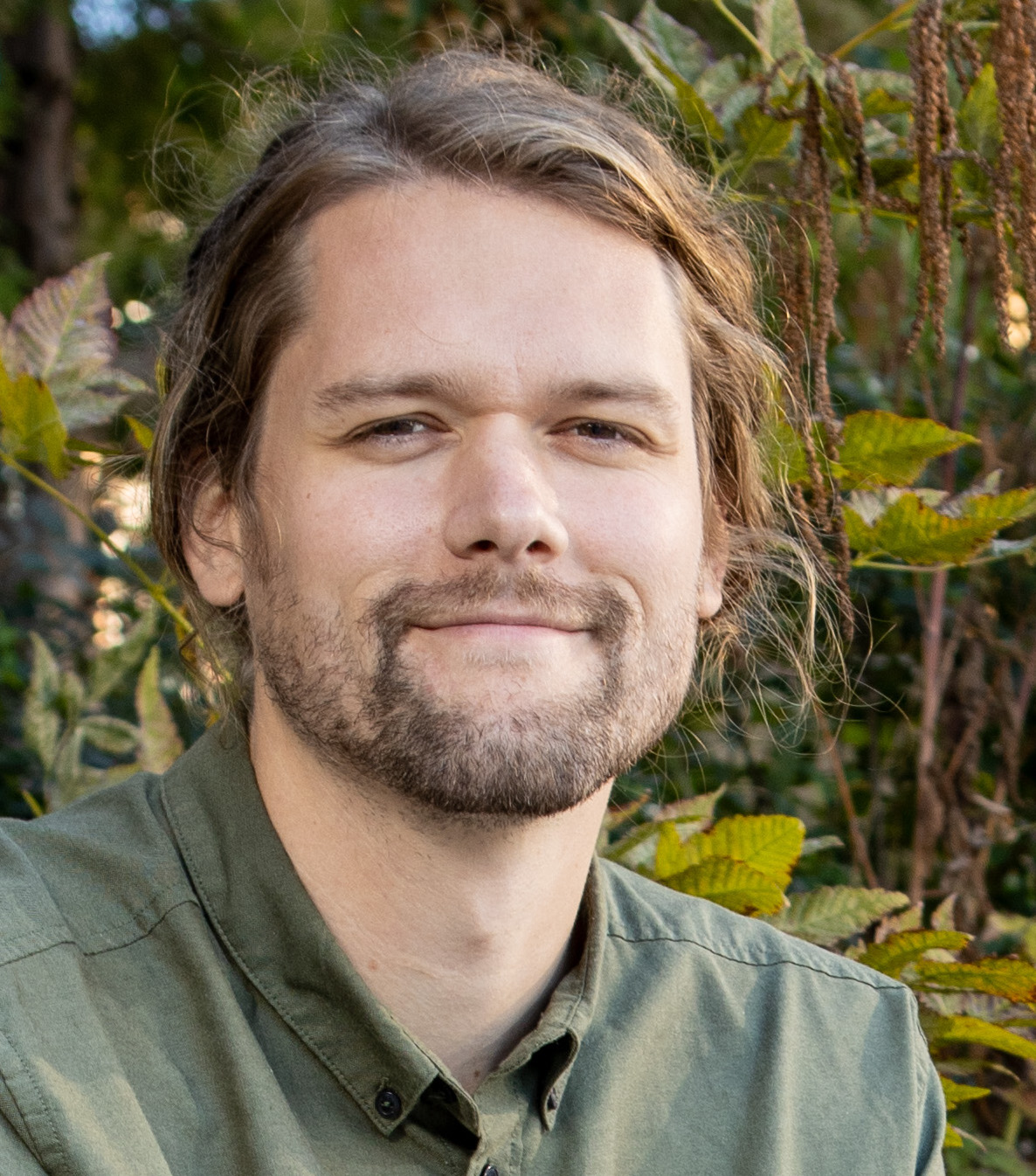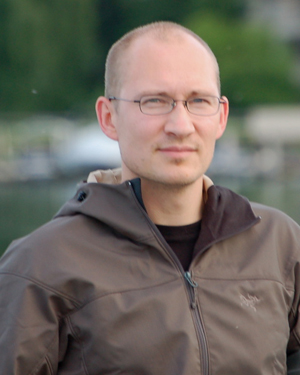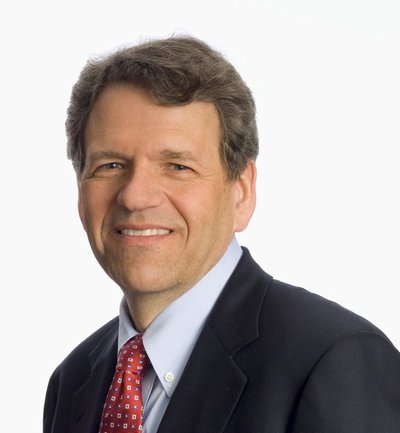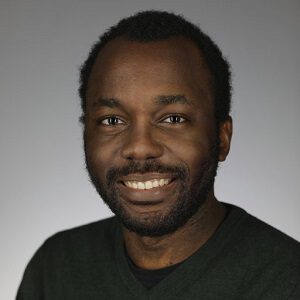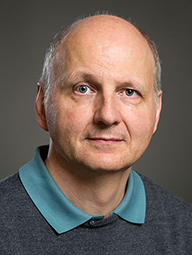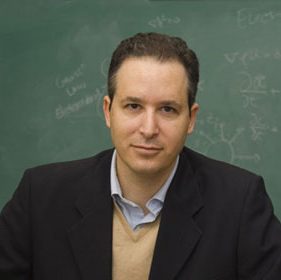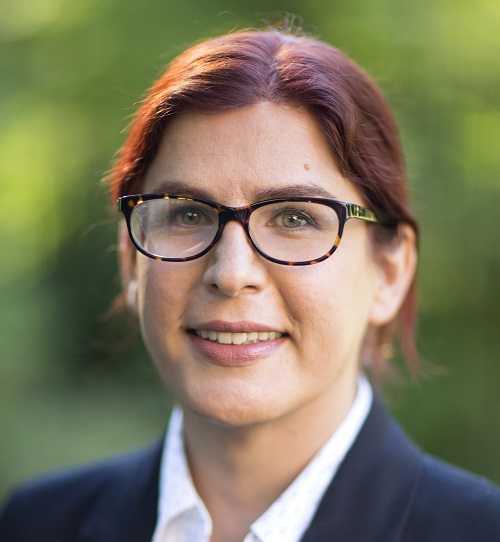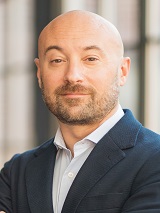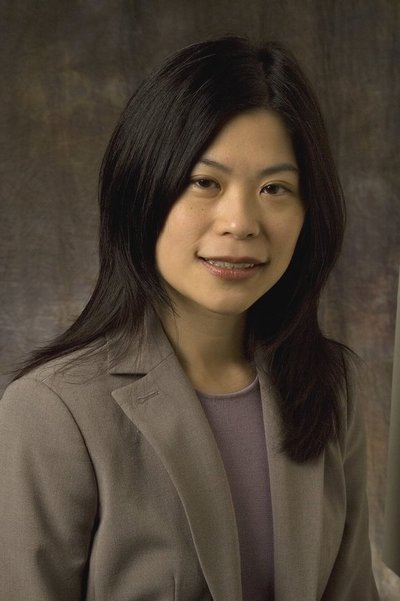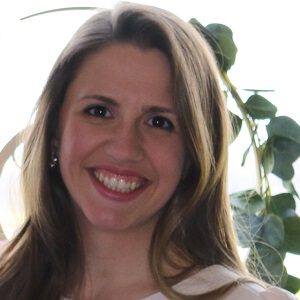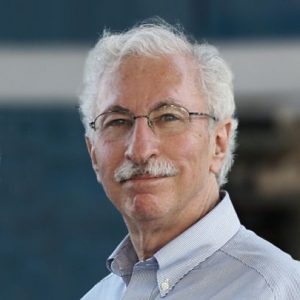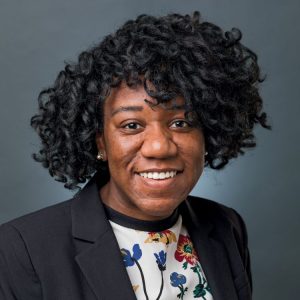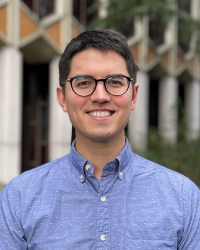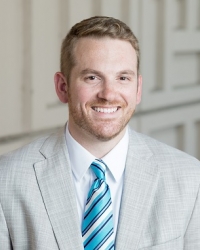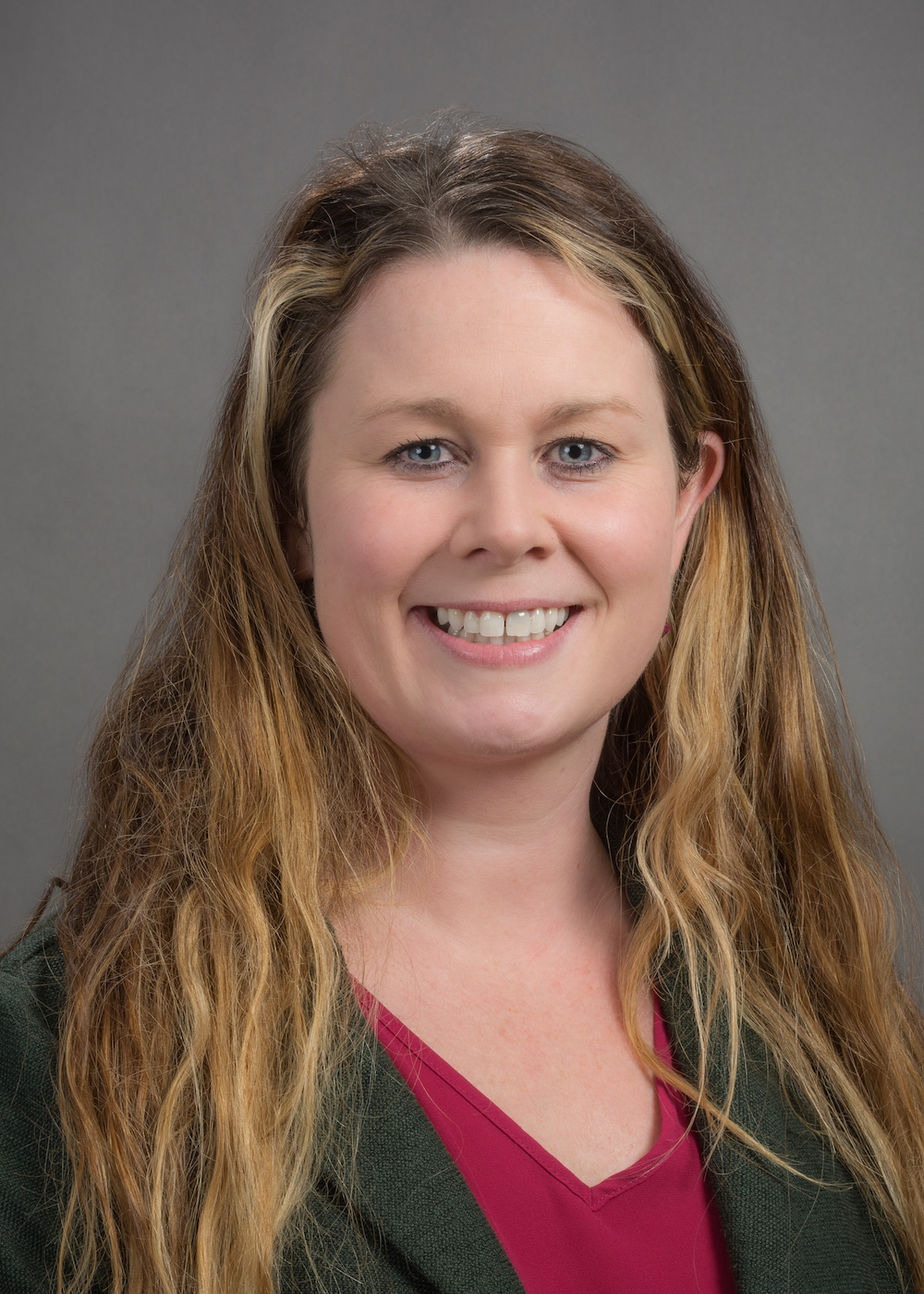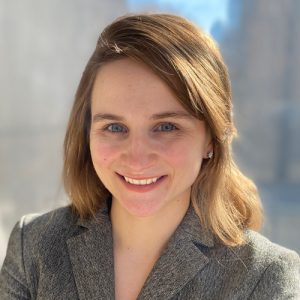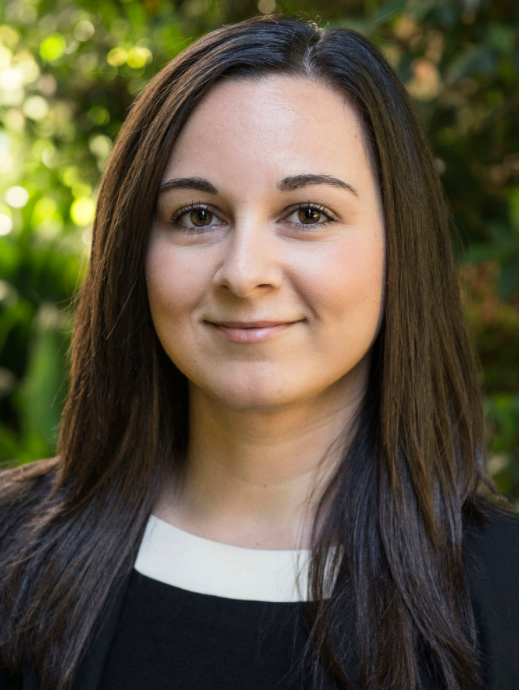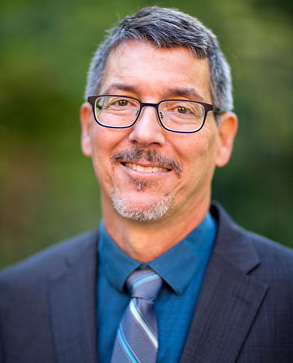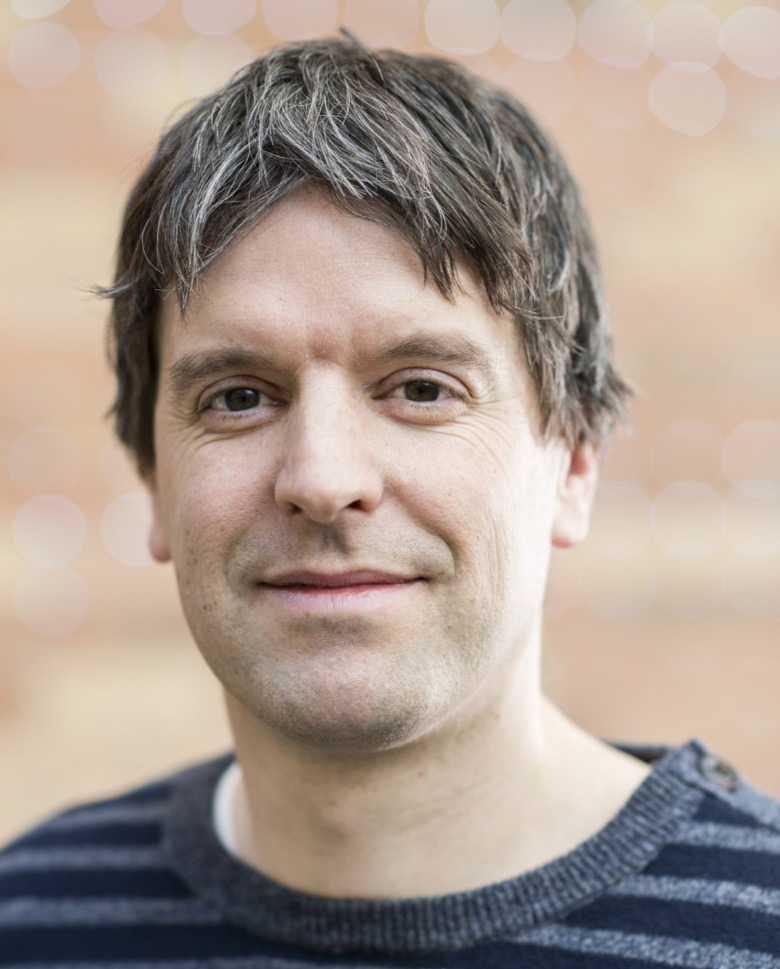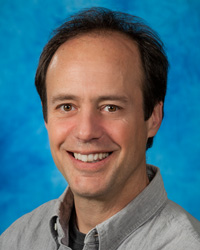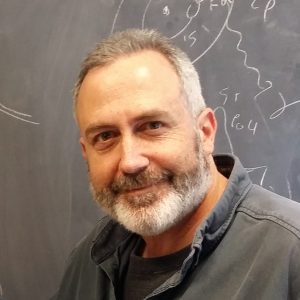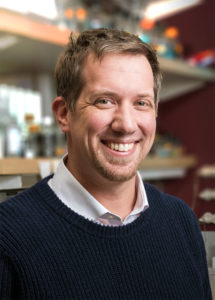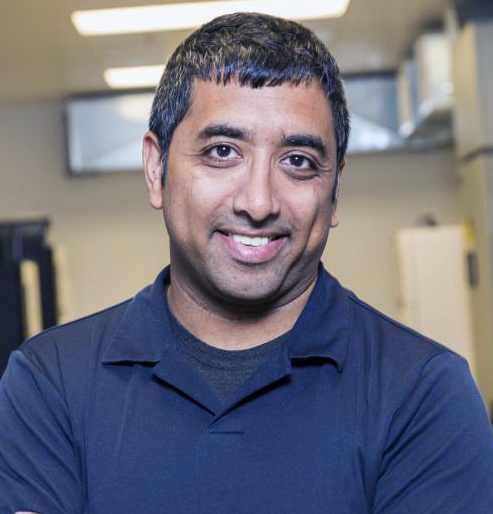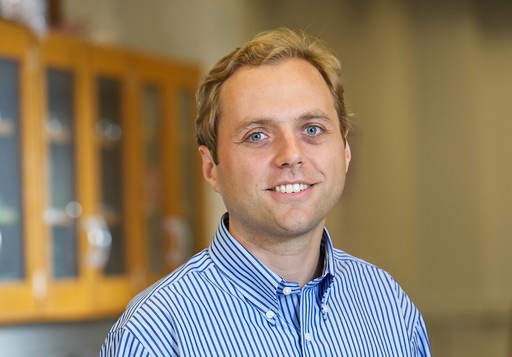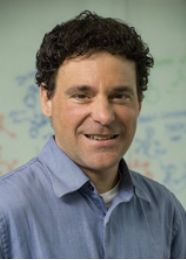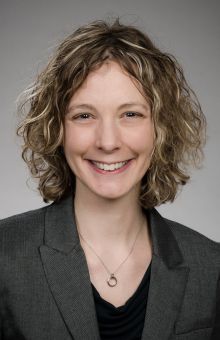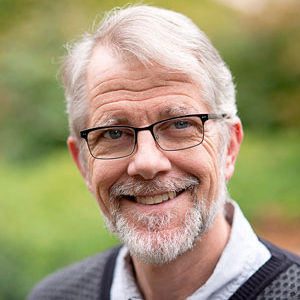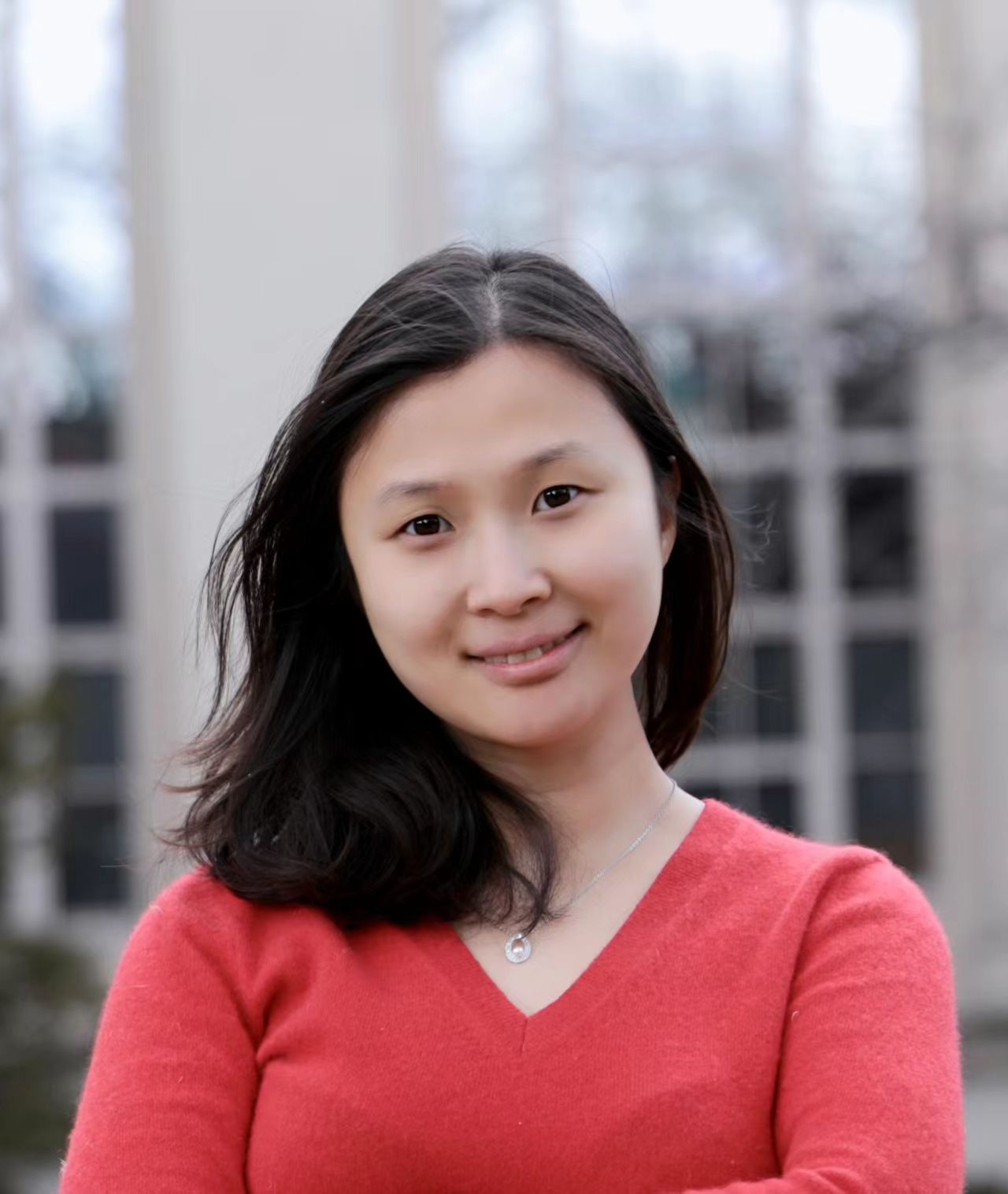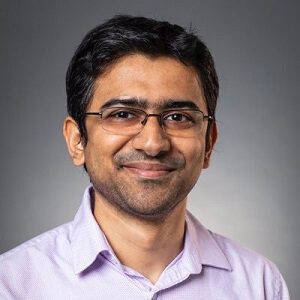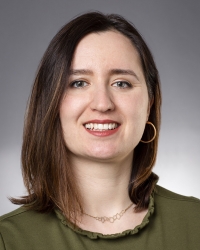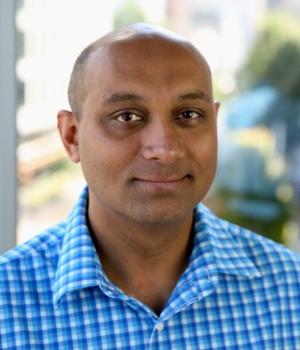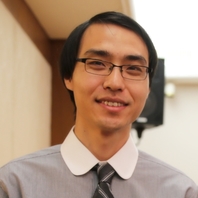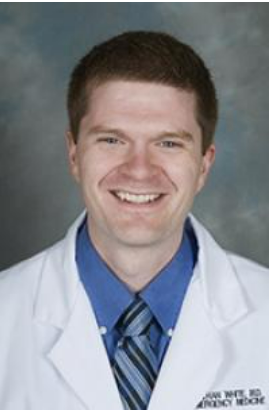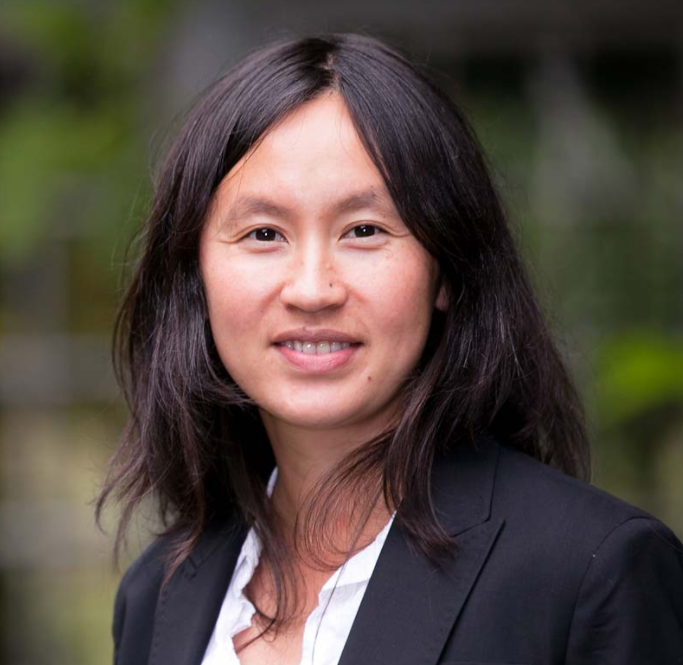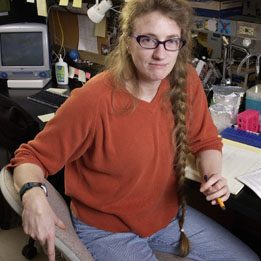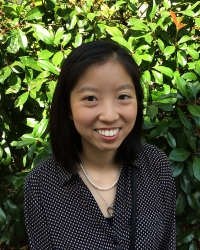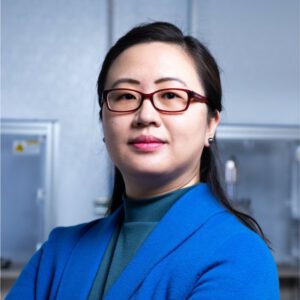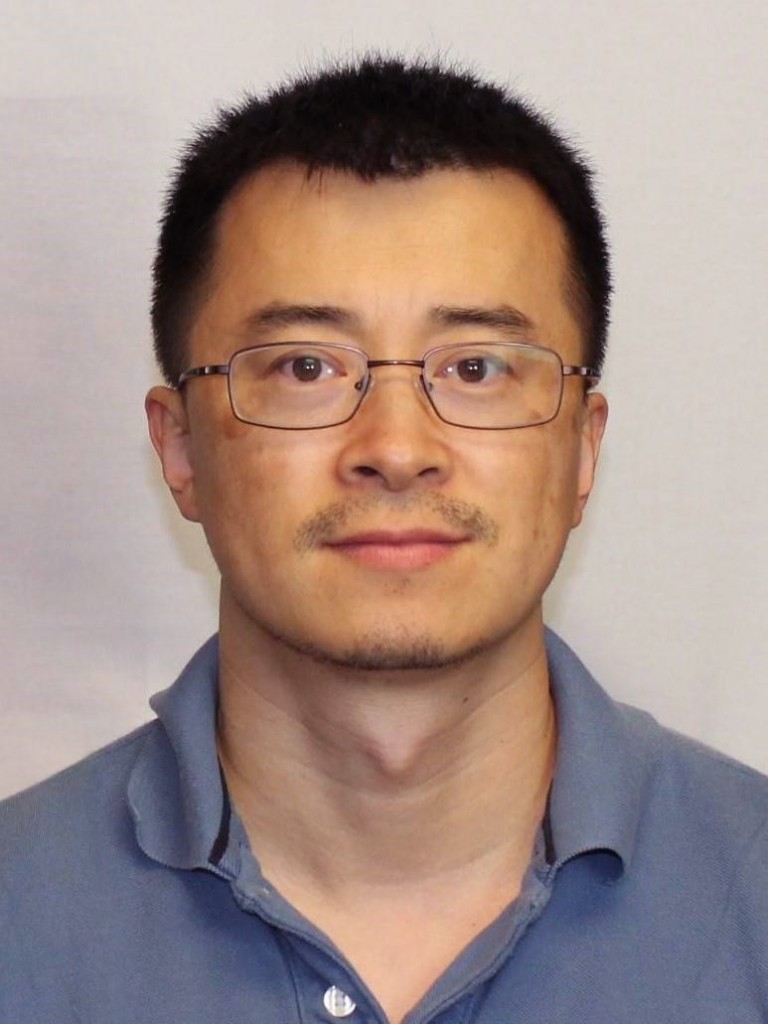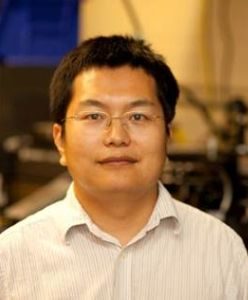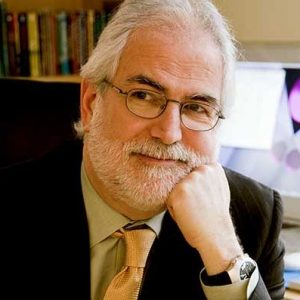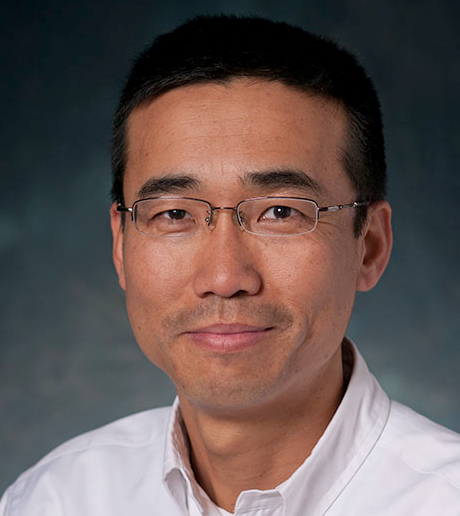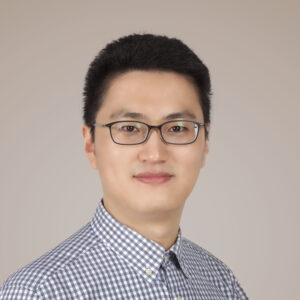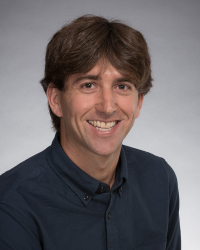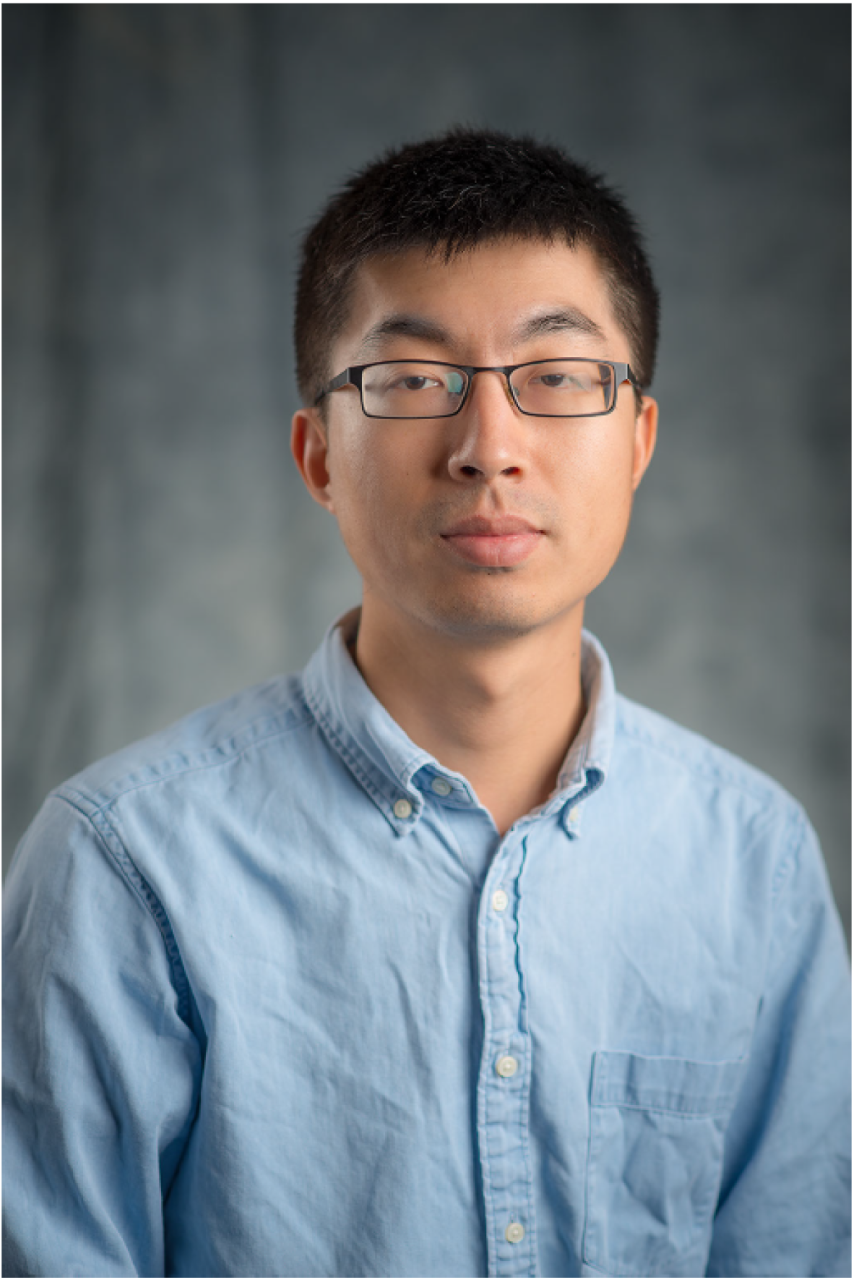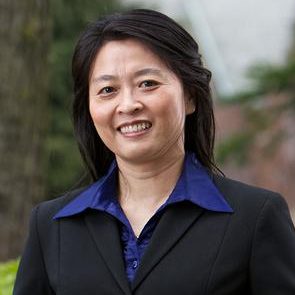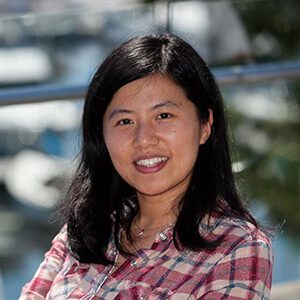Nancy Allbritton
Bioengineering
Research in my laboratory focuses on the development of novel methods to answer fundamental questions in biology & medicine. Much of biology & medicine is technology limited in that leaps in knowledge follow closely on the heels of new discoveries and inventions in the physical and engineering sciences; consequently, interdisciplinary groups which bridge these different disciplines are playing increasingly important roles in biomedical research. My lab has developed partnerships with other investigators in the areas of biology, medicine, chemistry, physics, and engineering to design, fabricate, test, and utilize new tools for biomedical and clinical research. Collaborative projects include novel strategies to measure enzyme activity in single cells by capillary and microfluidic electrophoresis, new strategies for software identification of cellular attributes by microscopy, organ-on-a-chip technologies, array-based methods for cell screening, and biodegradable scaffolding for regenerative medicine
M.P. (Anant) Anantram
Electrical and Computer Engineering
Electrical and Computer Engineering
Our group develops methods in the theory and computational modeling of nanoscale devices, and applies them to emerging technologies. In particular, we are interested in emerging devices where quantum mechanics plays a fundamental role in determining device behavior. Such devices have the potential to impact the fields of low power electronics and bio/chemical sensing technologies. We use both methods developed by us and other groups to design and simulate nanodevices and explain experiments. Our current research involves charge transport in (i) emerging memory devices where atom movement is central to information storage, (ii) bio nanostructures (DNA and peptides), (iii) molecular nanostructures and (iv) solar cells.
Charles Asbury
Physiology and Biophysics
Physiology and Biophysics
Our lab studies the mitotic spindle, a molecular machine that organizes and separates duplicated chromosomes during cell division, thereby ensuring equal partitioning of the genetic material. To uncover how this machine operates, we are reconstituting spindle functions using pure components and applying new biophysical tools for manipulating and tracking individual molecules, such as laser trapping and ultrasensitive fluorescence microscopy.
David Baker
Biochemistry
IPD Director
Professor Baker's research aims to predict the structures of naturally occurring biomolecules and interactions and to design new molecules with new and useful functions. Building on intial computational designs, Baker uses experiment to better understand the principles underlying catalysis and binding in order to design novel proteins and enzymes.
Nitin Baliga
Institute for Systems Biology
Institute for Systems Biology
The Baliga Lab develops predictive models to explain, predict and manipulate complex biological behaviors in order to catalyze strategies for personalized medicine, formulating effective therapies for tuberculosis, and crafting solutions for a sustainable environment. Interaction with the environment is central to how information within our DNA is decoded into observable phenotypes. Dr. Baliga and his laboratory are using a multidisciplinary systems approach to understand this process. Once delineated, the engineering principles governing assembly of biological systems will help unlock potentials within diverse organisms, and enable spectacular solutions for problems in environment, global health and medicine.
François Baneyx
Chemical Engineering
Research in the Baneyx laboratory lies at the confluence of synthetic biology, nanotechnology, molecular engineering and materials science. We are a lead lab in CSSAS, the Center for the Science of Synthesis Across Scales, an Energy Frontier Research Center (EFRC) directed by Prof. Baneyx that brings together investigators from six universities and a national laboratory. Inspired by nature’s ability to fabricate intricate and often hierarchical materials with outstanding transport, optical, and magnetic properties, we seek to understand the rules that underpin the interaction of combinatorially-selected solid-binding peptides with inorganic and synthetic interfaces. We genetically install these peptides within the framework of rationally or computationally designed proteins, thus combining biological function (e.g., self-assembly, catalysis or molecular transport) with the adhesive and morphogenetic properties of the guest peptides. We use the resulting solid-binding proteins as “parts” in hybrid materials and devices, or synthesize them in cells to fabricate self-organizing, dynamic and living matter with applications ranging from biomedicine and bionanoelectronics to biomineralization and catalysis.
David Beck
Chemical Engineering
MolES-related research interests: Molecular design and engineering through application of machine learning and Data Science methodologies. Bioprospecting for new molecules and industrial microbes.
MolES-related education interests: Data Science, scientific software design & engineering, reproducible computational research.
David Bergsman
Chemical Engineering
Our group tackles emerging challenges in water, energy, and sustainability using nanomaterials. Through the design of ultrathin nanostructures and coatings, we create membranes that can separate contaminants from water, catalysts that drive difficult chemical reactions, and materials enable the formation of previously unobtainable device architectures. We combine atomically-precise synthesis, advanced characterization approaches, and data science tools to better understand the behavior of molecules in these uniquely small systems and use that understanding to invent scalable processes that can enable the deployment of clean-energy technologies.
Andre Berndt
Bioengineering
The Berndt lab develops fluorescent biosensors for optogenetic approaches by utilizing structure guided and high throughput protein engineering. We aim to detect the activity of neurotransmitter, neuromodulators, hormones, ions and intracellular signaling molecules in life tissue and behaving animals. These sensors will provide multidimensional real time information of the current state of neurons and neuronal networks. Our goal is to identify impaired network dynamics in rodent models for neurological disorders. However, these protein tools are universally applicable and we seek to expand applications into other cell types such as cardiac, pancreatic and stem cells.
Gaurav Bhardwaj
Medicinal Chemistry
Our research focuses on computational and experimental tools for the high-throughput design and validation of peptide-based therapeutics. Current projects in our lab aim to design bioactive peptides against clinically-relevant molecular targets in drug resistance, chronic pain, and neurodegenerative disorders. We are also developing a general rulebook of design principles for peptides with enhanced membrane-permeability, oral bioavailability, and blood-brain barrier traversal.
Karl Böhringer
Electrical and Computer Engineering
Electrical and Computer Engineering
In our lab, we work on many aspects of micro and nano electro mechanical systems (MEMS / NEMS). This research tends to be very interdisciplinary, and we have collaborations in biology, chemical engineering, bioengineering, computer science, and other departments. We have built, for example, self-assembling microstructures, biomedical implants, systems for docking of picosatellites, and walking microrobots.
Charles Campbell
Chemistry
Improving catalysts could minimize the use of fossil fuels, thus helping solve the energy crisis while decreasing greenhouse gases. Our group tries to clarify why catalyst modifiers act to promote catalytic activity or selectivity, and how nanoscale features of the catalyst surface can tuned to make better catalysts. In solar cells and LEDs, charge injection and extraction occurs at the interface between a metal or other conductor and one of the semiconducting materials (inorganic materials in most current commercial devices, but hopefully cheaper-to-make polymer films in the future). We also study the energetics and electronic properties of these interfaces.
Shijie Cao
Pharmacy
The Cao Lab at the University of Washington is a dynamic and interdisciplinary research group that focuses on two exciting and innovative research directions: mucosal immunoengineering and microbiome pharmaceutics. We aim to develop innovative and translatable tools that can prevent and treat a host of immunological disorders, including allergies, inflammation, and autoimmune diseases, as well as infectious diseases. Currently, our lab is deeply engaged in developing therapeutics that modulate the immune system by specifically targeting the microbiome and its associated metabolites. By leveraging advanced drug delivery tools and microbiome modulation strategies, we aspire to unravel the complex interplay between the microbiome and various organ systems. This will not only expand our scientific understanding but also harness the potential of the microbiome to forge new pathways in improving human health.
James Carothers
Chemical Engineering
Our goal is to develop design platforms for engineering complex genetic control systems for fundamental and applied synthetic biology. In our work, we combine computational modeling, in vitro selection and genetic engineering to construct RNA-based systems that can process cellular information and program the expression levels of large numbers of genes. Our aim is to enable both better understanding of fundamental biological processes and applications to meet demands for renewable chemicals and new therapies.
Champak Chatterjee
Chemistry
Reversible enzymatic modifications of protein side-chains, also known as post-translational modifications or PTMs, confer complexity to biological systems by dynamically regulating the location, structure, and activity of proteomes. Elucidating the mechanistic contributions of post-translationally modified proteins to key cellular processes, such as gene transcription, is critical for understanding normal human development and to identify new therapeutic targets in diseases arising from the misregulation of PTMs. To accomplish these goals, we apply a seamless combination of chemical and molecular biological tools to investigate uniformly modified proteins in well-defined biophysical and biochemical systems. This enables us to elucidate the structure, function, and regulation of two important families of nuclear proteins – histones and transcription factors – that are implicated in cancers of the skin, breasts, lungs and brain.
Chun-Long Chen
Chemical Engineering
The main research interests in the Chen Group focus on understanding principles that govern behavior of sequence-defined peptoids with a particular emphasis on (1) self-assembly of peptoids into functional materials with hierarchical structures, such as biomimetic nanomembranes, crystalline nanotubes and biomimetic hydrogels, and (2) biomimetic control of inorganic crystallization, for example, peptoid-controlled formation of metal oxide and plasmonic nanoparticles and their self-assembly. The Chen Group also works on transferring the peptoid-based biomimetic materials into innovative applications that impact energy technologies and biological research, such as biomimetic catalysis, water separation, molecular sensing, biological imaging, and drug delivery.
Daniel Chiu
Chemistry
Our research is focused on developing new methods for probing complex biological processes at the single-cell and single-molecule level, and on applying these new techniques for addressing pressing biological problems.
Corie Cobb
Mechanical Engineering
Our lab investigates new manufacturing processes that will revolutionize energy storage and other complex engineered systems. This multidisciplinary approach integrates the fields of design, computation, manufacturing, and materials science. Currently, we are focused on developing new additive manufacturing solutions and battery electrode architectures for the most pressing problems in energy-relevant materials for Lithium-ion batteries. Our long term goal is to develop new scalable additive manufacturing processes that will enable the digital control of material architecture and can integrate energy storage and other operational features into electronics and structural components while supporting adaptive manufacturing on-demand.
Valerie Daggett
Bioengineering
The Daggett Laboratory focuses on studies of both bacterial and mammalian proteins involved in amyloid diseases. We use a variety of biophysical, biochemical, analytical, biological and computational techniques to investigate the conformational changes behind these devastating diseases. In turn, we use what we learn for the design and development of diagnostics and therapeutics.
Cole DeForest
Chemical Engineering
MolES Director of Education
Chemical Engineering
MolES Director of Education
Our team seeks to integrate the governing principles of rational design with fundamental concepts from material science, synthetic chemistry, and stem cell biology to conceptualize, create, and exploit next-generation materials to address a variety of health-related problems. We are currently interested in the development of user-programmable biomaterials for assaying dynamic stem cell fate and tissue engineering applications, controlled therapeutic delivery to combat disease, and new tools for enhanced proteomic studies. Our work relies heavily on the utilization of cytocompatible bioorthogonal chemistries, several of which can be initiated with light, to control material properties on the molecular level.
William DeWitt
Genome Sciences
The DeWitt lab is interested in applied probabilistic and dynamical modeling, statistical inference,
optimization, and machine learning, all grounded by questions about evolving biological systems. In
addition to innovating theoretical and computational methods, we work closely with domain experts
and experimentalists to design and analyze data and discover new biology. We work at the interface
between quantitative sciences and biology, and enjoy interdisciplinary collaborations and inclusive
scientific discourse.
Scott Dunham
Electrical and Computer Engineering
Electrical and Computer Engineering
Professor Dunham's MolES-related interests lie in modeling and simulation of chalcopyrite (CIGS and CZTS), silicon and polymer photovoltaics. Efforts within the Nanotechnology Modeling Laboratory are focused on obtaining basic understanding of nanofabrication processes and device operation and applying that knowledge to produce better models, simulators, and devices.
Maitreya Dunham
Genome Sciences
The Dunham lab uses yeast as a model system to understand genome evolution, and uses evolution as a way to modulate yeast biology. We develop and use high throughput genomics methods to build and screen libraries of natural and synthetic genetic variation in both native yeast sequences and genes imported from other species, including humans. We are also increasingly moving our work out of the lab and into high school classrooms, breweries, and beyond.
Albert Folch
Bioengineering
We design and use microfluidic devices to better mimic the real microenvironment of nerve and cancer cells when we culture them outside of the organism. We are microfluidic! Examples of questions that interest us are how neurons find their targets during development (axon guidance), how they establish their connections (synaptogenesis), and how we sense odors (olfaction), among other projects. We also build microfluidic devices that allow us to personalize chemotherapy and devices to study cancer stem cells.
Douglas Fowler
Genome Sciences
How does a protein’s sequence encode its fold and function? How do changes in sequence influence disease risk, prognosis and treatment? How do gene expression patterns combine with protein activity to define cellular processes like growth, migration and communication? The Fowler lab develops new ways to probe the relationship between genotype and phenotype, enabling us to better answer these questions. To accomplish this goal, we draw on our expertise in genomics, protein science, technology development and computational approaches.
Kai-Mei Fu
Electrical and Computer Engineering
Physics
Electrical and Computer Engineering
Physics
In the Optical Spintronics and Sensing Lab we study the quantum properties of point defects in crystals. In high purity crystals, simple quantum systems exhibiting a high level of quantum coherence can be realized.
Erica Fuhrmeister
Environmental and Occupational Health Sciences
Environmental and Occupational Health Sciences
As climate change increases the stress on an aging water and sanitation infrastructure, waterborne pathogens pose an emerging risk to public health. The global spread of antimicrobial resistance further compounds this threat and will severely limit our ability to treat life-threatening infections. The Fuhrmeister Group builds next-generation biosensing tools (e.g., nucleic acid detection and sequencing methods) to better understand the prevalence and transmission of these microbial threats. Projects in our group are range from fundamental to applied, domestic to international, and from the lab to the field.
Lara Gamble
Bioengineering
Dr. Gamble's research focuses on surface modification and characterization of model biomedical systems including fundamental research towards the preparation and characterization of DNA and protein microarrays. She is also involved in the development of new techniques that will enable improved analysis of the biomolecule-surface interface and improved chemical imaging of biologically relevant samples.
Daniel Gamelin
Chemistry
Professor Gamelin's research targets the development and physical characterization of new functional inorganic materials, with particular focus on semiconductor nanostructures and thin films for photophysics, spin-photonics, and solar energy conversion.
Xiaohu Gao
Bioengineering
Our group designs and develops functional materials and structures on the nanometer scale. Examples include multicolor quantum dots for fluorescence imaging, magnetic nanoparticles for MRI, metallic nanoparticles for ultrasensitive detection, and polymeric nanoparticles for targeted drug delivery. Most recently, we are developing multimodality imaging probes by combining different materials into discrete nanostructures in order to utilize the strength of each individual component.
Sean Gibbons
Institute for Systems Biology
Institute for Systems Biology
Our lab studies the ecology and evolution of microbial communities. In particular, we are interested in how host-associated bacterial communities influence the health and wellness of the host organism. We design computational and wet-lab tools for studying these complex systems. Ultimately, we aim to develop targeted ecological therapeutics for engineering the ecology of the gut microbiome to improve human health.
David Ginger
Chemistry
The Ginger Research Group pioneers techniques such as time-resolved electrostatic force microscopy (trEFM) and photoconductive atomic force microscopy (pcAFM) to study nanostructured solar cells, energy efficient light-emitting diodes, and biosensors.
Matthew Golder
Chemistry
Our team addresses the increased interplay between physical organic chemistry and material science that will undoubtedly give rise to the next generation of advanced macromolecules for applications in biomedicine and engineering. Rooted in structure and mechanism, work in the group tackles challenges in macromolecular synthesis across a variety of scales. Some representative goals include the development of novel methods to access cyclic polymers, the development of new approaches towards reconfigurable polymer networks, and the construction of force-responsive soft materials. Students will be trained across organic synthesis and polymer chemistry, with ample opportunity for cross-disciplinary collaboration involving bioengineering and materials science!
Sharona Gordon
Biological Structure
We aim to understand the molecular interactions between membrane lipids and membrane proteins. Using ion channels regulated by signaling lipids, we study how lipid binding alters the structure and function of channels.
Liangcai Gu
Biochemistry
My lab develops and uses integrated approaches for spatiotemporal, multimodal measure and control of complex living systems from molecules to tissues. We recently created protein-based sensors and actuators for chemical sensing and chemogenetic or optogenetic manipulation of cell behaviors in behaving animals. We developed polony gel (clonal DNA cluster array of ≤ 1-µm features)-based spatial barcoding and sequencing to spatially map single-cell transcriptomes and proteomes in morphologically intact tissues to study physiological, pathological, and pharmacological changes. Techniques frequently used in current projects include protein display and high-throughput screening, polony gel fabrication and sequencing, Pixel-seq, SMI-seq, mass spectrometry, and fluorescence imaging. We are applying new tools to study cellular senescence in tissues and brain mechanisms of chronic pain and addiction, to improve safety and efficacy of gene and cell therapies, and to guide the evolution of multi-enzyme machinery making high-value chemicals.
Jens Gundlach
Physics
Jens is an experimental physicist at the University of Washington. I have two main research interests that are pretty close to the opposite ends of the research spectrum in physics: fundamental physics and biophysics.
Miklos Guttman
Pharmacy
Our lab focuses on the structural analyses of glycoproteins and carbohydrate – protein interactions. We also develop new technologies for characterization and tracking of carbohydrates by mass spectrometry that sometimes includes instrument modification and software development.
Jim Heath
Bioengineering
The Heath lab has been developing new biomolecular engineered library technologies for the high throughput capture and analysis of antigen-paired CD8+ and CD4+ T cell receptors. (Foy, Nature 2023; Puig-Saus, Nature 2023; Chour; CommBio 2023) We are currently using these molecular engineered libraries to identify T cell receptors in projects that are supporting clinically deployed TCR-engineered T cell cancer immunotherapies, as well as fundamental biological studies, using spleen organoids, of the development of adaptive immunity following various vaccination treatments. these biomolecular engineering and immunology projects are accompanied by state-of-the-art computational biology algorithm development and application.
Hugh Hillhouse
Chemical Engineering
Professor Hillhouse's research is focused on the molecular science and engineering of clean energy conversion devices. In the area of solar cells, research topics in his group span the range from fundamental studies of semiconductor nanocrystal growth, colloidal and interfacial chemistry, nanostructure self-assembly, and semiconductor defect chemistry to the development of novel device architectures that will enable roll-to-roll printing of low-cost high-efficiency solar cells from molecular and nanocrystal-inks.
Bruce Hinds
Materials Science and Engineering
Materials Science and Engineering
Research interests: Nano-scale functional devices with emphasis on active engineering membranes; fluidic and ionic transport studies in nano-pores; biomimetic nanoporous platforms with active gatekeepers; biochemical separations and programmed enzymatic membrane reactors; electro-catalytic flow reactor material systems.
Vincent Holmberg
Chemical Engineering
Our research group is focused on the large-scale production of nanocrystals and nanowires synthesized by scalable solution-based and supercritical fluid-based processes for energy conversion and energy storage applications, with an emphasis on nanomaterial growth, assembly, and in situ electron microscopy.
Samson Jenekhe
Chemical Engineering
Our research is focused on the molecular engineering of organic and polymeric materials for electronic, photonic, and energy applications. Our studies include synthesis, processing, self-assembly, structure-property relationships, photophysics, and charge transport of organic and polymer semiconductors. Ongoing device engineering applications include thin film transistors, photovoltaic cells, light emitting diodes, and photodetectors.
Alice Kane
Institute for Systems Biology
Institute for Systems Biology
The Kane Lab studies frailty, as a quantitative measure of heterogeneity in health in aging. We are interested in identifying biological determinants of frailty in order to understand more about the molecular underpinnings of frailty and aging, to develop predictive biomarkers of frailty, and to identify targets to delay or prevent frailty. We use a combination of physiological, molecular and computational techniques across mouse models and human datasets. In particualar, we develop and analyze epigenetic, transcriptomic, metabolic, microbiome and functional/physiological data, and use machine learning and AI approaches to identify frailty markers and mechanisms. We are also interested in studying sex differences in underlying frailty measures.
Sarah L. Keller
Chemistry
Our lab investigates a wide range of questions concerning self-assembly, complex fluids, and soft matter systems, with a focus on lipid membrane biophysics and origins of life. A recurring research theme in the group is how simple lipid mixtures within bilayer membranes give rise to complex phase behavior.
Munira Khalil
Chemistry
The Khalil group seeks to understand charge transfer processes in solution at a microscopic level. One of our goals is to correlate electronic and atomic motion on ground and excited electronic surfaces. We use and develop various nonlinear spectroscopies employing ultrafast light pulses across the electromagnetic spectrum from Infrared (8 microns) to X-ray (0.4 nm) wavelengths.
Neil King
Biochemistry
Research interests: Protein design, protein self-assembly, protein structure, protein therapeutics, nanoparticle vaccines, and immunoengineering
Eric Klavins
Electrical and Computer Engineering
Electrical and Computer Engineering
The Klavins Lab uses tools and methodologies from electrical engineering and computer science to develop detailed mechanisms that will inform the development of novel biological systems in the emerging field of synthetic biology. Topics of research interest include gene expression, auxin signal processing, synthetic multi-celled systems, and directed evolution.
Gregory Korshin
Civil and Environmental Engineering
Civil and Environmental Engineering
Dr. Korshin’s research interests include corrosion and metal release in drinking water, environmental electrochemistry, advanced oxidation processes, development of new approaches to quantify and model the degradation of pharmaceuticals and other trace-level organic contaminants in wastewater, characterization of natural organic matter and its reactions with halogens, on-line methods to monitor drinking water quality and environmental chemistry of radionuclides. He has published almost a hundred refereed publications, many of them in leading journals such as Water Research and Environmental Science & Technology. Prof. Korshin has participated in numerous projects funded by Water Research Foundation, Water ReUse Foundation, National Science Foundation, U.S. Environmental Protection Agency and other organizations.
Anna Kuchina
Institute for Systems Biology
Institute for Systems Biology
Kuchina lab research interests lie in the development and application of high-resolution technologies toward understanding the single-cell biology of bacteria within complex samples such as biofilms, and in challenging environments such as the human host. We develop and apply single-cell genomic tools for unbiased, high-throughput expression profiling of bacterial consortia. Our custom technology based on combinatorial barcoding is scalable, versatile, and customizable for use in various settings including the host-pathogen interface, environmental microbial communities, or the bioengineered bacterial consortia used for biomanufacturing.
Hao Yuan Kueh
Bioengineering
Our lab studies how immune cells make fate decisions, both as they develop from stem cells, and as they respond to antigens. We combine live cell imaging, mathematical modeling and other modern approaches to dissect the molecular circuitry underlying fate control at the single cell level. Our work will lay foundations for engineering immune cells to treat cancer and other life-threatening diseases.
Mary Lidstrom
Chemical Engineering
Lih Lin
Electrical and Computer Engineering
Electrical and Computer Engineering
Our group studies and utilizes three-dimensionally confined nanoparticles such as colloidal quantum dots (QD) and plasmonic nanoparticles (NP) to build various nanophotonic devices. These materials harvest strong near-field interaction with light, and have opened new directions in nanophotonic devices and integration, as well as various applications in biomedicine and nanotechnology. We investigate light detection, harvesting, stimulation of cells and trapping using nanostructures. In addition, we also pursue device integration in micro-scale utilizing optical MEMS technology.
Jonathan Liu
Mechanical Engineering
Jonathan Liu’s research interests are nanoparticle contrast agents, molecular imaging, biophotonics, immunofluorescence microscopy, in vivo microscopy, 3D microscopy, and cancer biomarkers.
Devin MacKenzie
Materials Science and Engineering
Materials Science and Engineering
Our lab’s work is centered around the development of new materials, device structures and integrated processes that enable more sustainable, lower carbon footprint, additive manufacturing pathways to optoelectronics, energy and biosensors. This includes techniques ranging form the world’s highest resolution inkjet printing systems for photonics, quantum materials and flexible electronics to scalable roll-to-roll (R2R) processing energy storage, sensing, and integrated systems. Key to these approaches is the development of solution-processable highly materials such as nanoscale emitters, conductors and semiconductors as well as molecular probes and functionalizations that enable the processing techniques and required optical, electronic and electrochemical performance. This will enable applications not well served by conventional semiconductor and lithium energy storage technologies that lack the processing rate, have large carbon footprints and use environmentally damaging materials in subtractive processes.
Lutz Maibaum
Chemistry
The Maibaum Group uses the tools of computational modeling and statistical mechanics to understand mechanisms of biophysical processes and to design novel biomimetic materials. One focus of our work is the emergent spatial organization of cellular membranes and their response to external stimuli such as bending or protein binding. Another recent example is the incorporation of azobenzene groups into DNA, which allows control over DNA hybridization and opens a new route towards designing photo-responsive materials.
Arka Majumdar
Electrical and Computer Engineering
Electrical and Computer Engineering
Our research is focused towards developing new nanophotonic devices where we can engineer light-matter interaction to enable few photon optoelectronics.
Dustin Maly
Chemistry
Our group aims to understand and control the enzyme families involved in intracellular signal transduction. The final goal of these studies is to identify new molecular targets for the treatment of human disease. We integrate techniques from organic chemistry, biochemistry, protein engineering, proteomics, and cell biology to develop new tools that provide a greater understanding of diverse signaling processes. Our technological innovations seek to address the limitations of currently existing methods for studying these highly dynamic cellular events. Furthermore, we are using these tools to answer a number of fundamental questions in biology.
Alexander Mamishev
Electrical and Computer Engineering
Electrical and Computer Engineering
The goal of our research is to create new sensor and automation technology applications in such fields as non-destructive testing, power engineering, and manufacturing control using latest advances in signal processing, robotics, and communications. We are particularly interested in developing energy-efficient electrohydrodynamic air movers and using dielectric spectroscopy for non-destructive testing and forensics.
Jorge Marchand
Chemical Engineering
The Marchand Lab aims to utilize fundamental approaches in synthetic biology, chemical biology, biosynthesis, and biomolecular engineering for reprogramming life at the nucleic acid level. The goal is to extend the nucleotide building blocks available in living systems for biosynthesis, and to use newly expanded metabolism for producing nucleic acids with emergent, programmable function. Our group currently focuses on xenonucleic acids with nucleobases that basepair orthogonally to the canonical genetic code (i.e. ATGC+XYWZ). These xenonucleic acids are all synthetic in source. In applying our technology, we look to leverage expanded genetic codes for biomanufacturing and for developing more sensitive nucleic acids for diagnostics and biosensing. Towards these goals, our group focuses on three fundamental areas in the xenonucleic acid field: enzymatic synthesis, next-generation sequencing, and synthetic biology.
David Masiello
Chemistry
Professor Masiello’s research focuses on the theoretical understanding of a variety of nanoscale light-matter interactions involving the excitation of surface plasmon resonances. Examples include electron energy-loss spectroscopy, cathodoluminescence, thermo-plasmonics, plasmon-enhanced catalysis, and plasmon-enhanced linear and nonlinear molecular optical phenomena.
Alexey Merz
Biochemistry
The goal of our research is to understand how cells control the architecture of their intracellular organelle systems through the regulated self-assembly of lipid membranes and membrane-associated proteins. We employ both highly focused hypothesis tests and systems-level approaches that harness genetic, biochemical, and biophysical analytical techniques.
Raymond Monnat
Genome Sciences
The Monnat Lab is interested in the molecular basis of human disease, and how synthetic and engineering approaches can be used to understand, treat or prevent disease. Our specific research projects have focused on cancer biology and therapy, and on building genome engineering tools to enable cellular and synthetic biology disease applications.
Sean Mooney
Department of Biomedical Informatics and Medical Education
Department of Biomedical Informatics and Medical Education
Dr. Sean Mooney is the Chief Research Information Officer (CRIO) of UW Medicine, the Director of Informatics for the Institute of Translational Health Sciences, an Associate Director of the National Alzheimers Coordinating Center (NACC), the Interim Director of the UW Institute for Medical Data Science, and a Professor in the Department of Biomedical Informatics and Medical Education at the University of Washington. As CRIO, he leads the growing Research Information Technology team that contributes to a number of national research networks the National Kidney Precision Medicine Project, the National Alzheimer’s Coordinating Center, the UW Clear Center and others. Some notable efforts include leading the team that developed the open source Leaf application for clinical data querying and extraction, managed a REDCap instance with >25k projects and >15k active users, managing the FH, UW and Seattle Cancer Care Alliance joint CTMS application, and enhancing the UW Medicine EDW with advanced analytics including NLP. Currently he is focusing on developing an Epic EHR Research team for supporting research in the EHR at UW Medicine and leading the newly founded UW Institute for Medical Data Science. His research interests focus on data science applications in biomedicine, particularly in understanding the underlying molecular causes of inherited genetic diseases and cancer.
Elizabeth Nance
Chemical Engineering
The Nance lab is focused on using nanotechnology based platforms (polymer, dendrimer, quantum dot) to understand transport limitations at the macro and micro scale in the central nervous system. We are particularly interested in using nanotechnology to characterize how common disease hallmarks, such as inflammation, impaired fluid flow, and excitoxicity, play a role in the ability to diagnose and treat neurodevelopmental diseases like autism, neonatal stroke, traumatic brain injury, and epilepsy.
Abhinav Nath
Medicinal Chemistry
The Nath lab is interested in characterizing and controlling functionally relevant protein dynamics. We use a broad set of techniques from biophysics and pharmacology, including single-molecule fluorescence and molecular simulations, to better understand and engineer the behavior of enzymes and transporters involved in drug metabolism; emerging protein therapeutics; and aggregation-prone intrinsically disordered proteins implicated in major neurodegenerative disorders.
Alshakim Nelson
Chemistry
We harness our understanding of organic chemistry, polymer chemistry, and supramolecular chemistry to design stimuli-responsive materials for life science applications. Our current focus areas include polymer-living cell composite materials (also known living materials) and polymers to create anatomical models for human tissue. Our approach is to utilize the stimuli-responsive behavior of the materials to facilitate their fabrication or patterning. We are an interdisciplinary team of researchers, and our methods include polymer synthesis, rheological characterization, culturing microbes, and 3D printing.
Jennifer Nemhauser
Biology
The Nemhauser Lab is interested in understanding how signaling pathways fit into the broader contexts of time, location within an organism, and interaction with other signals. Specifically, we use a model plant called Arabidopsis thaliana to dissect the network by which seedlings change their form to take best advantage of their light environment. This process is called photomorphogenesis. Work from many groups over the past twenty years has produced a long list of factors linked to photoreceptors, the proteins that directly sense light and begin the process of photomorphogenesis. The goal of our research is to understand how these diverse proteins and small molecules create a robust and flexible network that shapes plant form.
Jeff Nivala
Computer Science and Engineering
Computer Science and Engineering
Our group is focused on molecular technology development for a wide array of applications, from genomics and proteomics to molecular computing and digital data storage using DNA. To do this, we integrate expertise in synthetic biology, biophysics, biochemistry, computer science, and engineering. Current areas of focus include nanopore sensing, single-molecule protein sequencing, CRISPR-Cas, wet-lab automation, machine learning for biological systems design, and cyber-bio security.
Igor Novosselov
Mechanical Engineering
Our group studies the combustion synthesis of nanostructured material for application in energy and biomedical fields. We focus on low-cost production and self assembly of carbon and metal oxides aerosol gels.
Matthew O’Donnell
Bioengineering
Our lab is developing molecular agents and systems for photoacoustic and ultrasonic molecular imaging. Also, we look at integrated therapeutics for molecular-level theransotics (i.e., integrated diangostics and therapy).
Ayokunle Olanrewaju
Bioengineering
Mechanical Engineering
Bioengineering
Mechanical Engineering
We develop activity-based assays to measure medication concentration based on the drug’s inherent activity. One of our ongoing projects is focused on developing REverSe TRanscrIptase Chain Termination (RESTRICT) assays that measure the concentrations of nucleotide analog drugs used in HIV treatment and prevention. These molecular assays provide rapid and user-friendly measurement of HIV medications directly in patients’ blood and can be used to monitor and individualize the concentrations of oral HIV therapies and emerging long-acting injectable therapies.
Rene Overney
Chemical Engineering
Research in Overney’s Lab focuses on obtaining a fundamental understanding of material functionalities involving nano-confined complex molecular systems. We are particularly interested in i) identifying basic internal and external constraints that are responsible for unique material and transport properties, and ii) applying knowledge of molecular- and nano-constraints to material engineering in a rational fashion, with focus on the molecular building blocks, their subunits, and their temporal and spatial mobilities.
Sudarshan Pinglay
Genome Sciences
My research background has been in the development of tools for ‘genome writing’ in mammalian cells. This involved the bottom-up synthesis and site-specific delivery of large (>100kb) DNA constructs, which facilitates multiplex editing over large genomic windows and the introduction of large amounts of novel genetic information. Subsequently, I have advanced techniques for the multiplexed generation and single-cell analysis of large structural variants including extrachromosomal circular DNAs (ecDNAs) in mammalian genomes. In January 2024, I established my lab at the University of Washington and the Seattle Hub for Synthetic Biology with the support of an NIH DP5 Early Independence Award. In my research group, we focus on developing technologies at the intersection of mammalian genome engineering, large-scale (>100kb) DNA synthesis, single-cell sequencing and de novo protein design. With these tools, we aim to construct improved disease models, elucidate the mechanisms of gene regulation, to probe the limits of genome structure and to encode novel functionalities into mammalian cells for applications in biologics production, cell therapy and cultivated meat.
Jonathan Posner
Chemical Engineering
Mechanical Engineering
Chemical Engineering
Mechanical Engineering
The Posner Lab research focuses on need-driven research projects including point-of-care in-vitro diagnostics and medical device development. We develop and validate nucleic acid, immuno, and enzyme-based diagnostics for a range of infectious disease applications, including HIV and HCV. We specialize in novel point-of-care sample preparation strategies –such as paper microfluidic devices, enzyme chemistry, and isothermal amplification– for low-resource environments that allow complex samples (such as blood, urine, etc.) to be adapted to assays that typically require many human handling steps. We use device fabrication, novel chemistry, electrokinetics, optics, mobile phones, and machine learning to develop integrated and quantitative diagnostics at the point-of-use. Our lab also develops novel enzymatic assays (RESTRICT and INTEGRITY) for measuring pharmaceutical drug level measurement of anti-retorviral compounds for personalized treatment of infectious diseases (HIV), therapeutic medication adherence, long acting injectables, and validation of clinical trials for vaccines.
Lilo Pozzo
Chemical Engineering
Our research focuses on understanding and controlling self-assembly processes in dispersed colloidal, polymeric and nanoparticle systems. This fundamental knowledge allows for manipulation of material properties for applications in solar energy, nanomedicine, separations and advanced coatings amongst others. We also develop in-situ neutron and x-ray scattering techniques to formulate structure-property relationships under realistic processing and use conditions.
Marco Pravetoni
School of Medicine
The Pravetoni group focuses on development and translation of medical interventions against substance use disorders (SUD) and other chemical and biological threats. Current efforts are: 1) vaccines, monoclonal antibodies (mAb), and small molecules to treat or prevent SUD, opioid use disorders (OUD) and overdose, 2) mechanisms and biomarkers underlying or predicting efficacy of immunotherapeutics and medications in pre-clinical models of SUD and OUD patients, 3) novel strategies to enhance vaccine or medication efficacy, including immunomodulators, small molecules, adjuvants, nanoparticles, polymers and other delivery platforms, 4) Vaccines, mAb, and clinical biomarkers against infectious diseases (e.g., Pseudomonas aeruginosa and novel coronavirus SARS-CoV-2), 5) biosensors for field detection or diagnosis.
Suzie Pun
Bioengineering
MolES Director
Bioengineering
MolES Director
Research in the Pun Group focuses on advancing macromolecule drug delivery technology by developing materials that overcome transport limitations in tissues and within cells. We are integrating techniques from engineering, chemistry, and cell biology to achieve this goal.
Lauren Rajakovich
Chemistry
The Rajakovich Lab aims to discover and characterize novel enzymes and metabolic activities in bacteria, archaea, and host-associated microbiomes. We are interested in the unique metabolic strategies that microbes use to adapt to and influence their environments. Current focus areas include the human gut microbiota and chemistry in anaerobic environments. We use an interdisciplinary approach combining enzymology, microbiology, chemistry, and bioinformatics to link genes, enzymes, and biochemical functions and to elucidate the molecular mechanisms underlying those functions. Our goals are to illuminate the impact of microbes on the natural world and to manipulate and engineer microbial enzymes to improve human and environmental health.
Buddy Ratner
Bioengineering
Medical devices and implants are engineered from specially designed materials, often referred to as biomaterials. Millions of devices and implants are used clinically in applications as diverse as blood vessel replacements, catheters, contact lenses, hip joints, ventricular assist devices and artificial kidneys. The biocompatibility of these prostheses is dictated by their surface properties and by the local mechanical environment they induce. In my research program, biomaterials are engineered to control biological interactions, synthesized, characterized and observed during interaction with biological systems.
Jessica Ray
Civil and Environmental Engineering
Civil and Environmental Engineering
Ray’s research bridges materials science and environmental engineering to create unique solutions to urban water supply sustainability. We design novel composite materials to: (1) selectively adsorb and/or degrade toxic, persistent contaminants, (2) remove contaminants in urban stormwater, and (3) recover value-added products from waste streams. We investigate interfacial reactions using surface chemistry techniques to better understand the structure-function relationships of our materials for their intended applications.
Douglas Reed
Chemistry
The Reed Lab studies the synthesis and properties of functional materials to be used to understand emergent physical phenomena or in applications such as advanced electronic devices or environmental remediation. We combine aspects of inorganic, organic, and nanomaterials chemistry to make hybrid materials with well-defined structural, electronic, and magnetic properties on the nanoscale. Students will develop skills in materials synthesis and utilize physical methods to understand these materials, including diffraction, gas sorption, spectroscopy, magnetometry, and device preparation techniques.
Nicholas Riley
Chemistry
Nick launched the Riley Research Group at the University of Washington in September 2023. His independent program leverages creative technology development to study fundamental roles of glycosylation in cell surface biology, with a focus on glycocode regulation and dysregulation in cancer progression and metastasis. The Riley Research Group integrates MS-based multi-omics, chemical/molecular biology, and bioinformatics in a systems-level approach to glycobiology to further our understanding of human health and disease and to advance therapeutic glycoscience.
Jenny Robinson
Mechanical Engineering
The Tissue and Regenerative Engineering (TARE) Lab aims to understand the cues needed to promote connective tissue regeneration after injury with a focus on sex differences in this process. Specifically, we engineer biomaterials aimed to elucidate how immune, progenitor, and differentiated cells from male and female musculoskeletal tissues differentially respond to sex hormones and the structural and mechanical cues from the extracellular matrix. This physiological information is used to develop biomaterial scaffolds engineered to promote sex-specific regeneration.
Julie Rorrer
Chemical Engineering
The Rorrer Lab leverages tunable heterogeneous catalytic systems to enable sustainable chemical transformations including the chemical upcycling of waste plastics, and catalytic upgrading of biomass- derived platform molecules. By developing targeted active catalytic sites to enable new chemical transformations and leveraging advanced characterization techniques, we aim to advance the field of renewable and sustainable chemical production, shifting away from fossil fuel consumption and mitigating the detrimental environmental effects of waste plastics.
Eleftheria Roumeli
Materials Science and Engineering
Materials Science and Engineering
Our group focuses on designing sustainable materials. Through a holistic approach we develop bioplastics, biocomposites, and environmentally friendly structural materials sourced from biological building blocks, and specifically from biopolymers. Our work involves the study of diverse organisms from algal, bacterial, and plant kingdoms, aiming to leverage their inherent biopolymer composition and hierarchical structure for innovating new materials. Our focus on circularity includes utilizing carbon-negative biological materials, minimizing energy-intensive processing, and enabling end-of-life strategies. We investigate the relationship between structure, processing, mechanical properties and environmental impacts aiming to engineer materials with tailored performance and a reduced environmental footprint.
Shelly Sakiyama-Elbert
Bioengineering
School of Medicine
Bioengineering
School of Medicine
Professor and Vice Dean of Research and Graduate Education, UW School of Medicine, Sakiyama-Elbert’s own research focuses on developing new bioactive materials to drive tissue regeneration and cell transplant survival after nervous system injuries. Her lab at UW BioE continues her work developing techniques to promote functional recovery after spinal cord injury and treat peripheral nerve damage. Her team develops methods to prompt stem cells to give rise to the various neural cells needed for spinal cord regeneration, optimizes cell populations for transplantation, and designs materials for controlled growth factor and drug delivery. Sakiyama-Elbert is also a faculty member at UW’s Institute for Stem Cell & Regenerative Medicine.
Daniel Schwartz
Chemical Engineering
The formation and function of electrochemical materials and interfaces are critically affected by molecular adsorption and templating. Our group explores the use of engineered proteins as modifiers of nucleation and growth, as well as orchestrators of hierarchical structures. In separate efforts, we also explore innovative methods to convert waste materials, especially lignocellulosic feedstocks, into value added products.
Georg Seelig
Electrical and Computer Engineering
Electrical and Computer Engineering
We are interested in understanding how biological organisms process information using complex biochemical networks and how such networks can be engineered to program cellular behavior. The focus of our research is the identification of systematic design rules for the de novo construction of biological control circuits with DNA and RNA components. Our approach integrates the design of molecular circuitry in the test tube and in the cell with the investigation of existing biological pathways like the microRNA pathway. Engineered circuits and circuit elements are being applied to problems in disease diagnostics and therapy.
Eric Seibel
Mechanical Engineering
The Human Photonics Laboratory (HPL) works to advance the frontier of optical technology in the areas of human performance, cancer detection, and treatment. The HPL has historical ties with the Human Interface Technology Lab at the University of Washington where the ideas for the immersive VR pain distraction, scanning fiber endoscope, and the optical projection tomographic microscope originated.
Gerald Seidler
Physics
Our group’s research focuses on the development and application of novel x-ray spectroscopies to problems of basic, applied, and environmental energy sciences.
David Shechner
Pharmacology
My laboratory aims to decipher and manipulate the molecular mechanisms by which mammalian cells establish and utilize higher-order chromatin structures, with an emphasis on the interplay between noncoding RNAs (ncRNAs) and nuclear architecture. Towards this end, we are developing a suite of novel technologies for probing and exploiting ncRNA function in situ, including methods for targeting artificial ncRNA devices to chromatin. Combined with an array of biochemical, genomic, and chemical biological techniques, we aim to elucidate the mechanisms by which ncRNAs influence nuclear organization at all levels. This will enable new routes towards novel RNA-based and RNA-focused biotechnologies and therapeutics.
Jay Shendure
Genome Sciences
The Shendure Lab is part of the Howard Hughes Medical Institute and the Department of Genome Sciences at the University of Washington (Seattle, WA). The mission of our lab is to develop and apply new technologies and methods for genetics, genomics and molecular biology. Most of our work exploits next-generation DNA sequencing which is effectively emerging as a broadly enabling microscope for the measurement of biological phenomena. Our ongoing work generally falls into six areas: developing new molecular methods, genomic approaches to developmental biology, massively parallel functional genomics, translating genomics to the clinic, genetic basis of human disease and genome sequencing technologies.
Nathan Sniadecki
Mechanical Engineering
Our lab investigates how cells are influenced by mechanical interactions at the micro and nanoscale. To pursue these goals, we are developing new tools micro- and nano-devices, quantitative image analysis, and computational models that we use to understand the underpinnings of biomechanics and mechanobiology. The greater impact of our work is to delineate how cell mechanics affect cardiovascular disease and cancer in order to catalyze new strategies for their treatment. By working at the intersection of mechanics and biology, we are increasing understanding of the theories of soft, active, and multifunctional materials.
Patrick Stayton
Bioengineering
Our group is interested in elucidating the fundamental mechanisms of biomolecular recognition and applying the unique capabilities of biological molecules to biotechnologies. We would like to bridge the gap between understanding molecular structure-function relationships, and to be able to utilize proteins/peptides/DNA for in vivo drug therapies, bioseparations, diagnostics, and biomaterial development.
Kelly Stevens
Bioengineering
Our goal is to hijack and rewire aspects of nature's developmental programs to control the processes by which cells assemble to form human tissues. We are also working to develop technologies to remotely control these tissues after implantation in a patient. To do this, we use diverse tools from stem cell biology, tissue engineering, synthetic biology, microfabrication, and bioprinting. We seek to translate our work into new regenerative therapies for patients with heart and liver disease.
Eric Stuve
Chemical Engineering
The UW Electrochemical Surface Science (UWESS) group examines surface science phenomena related to electrochemical situations, with an emphasis on fuel cells and related technologies. Current projects include electrochemical reforming of biomass to hydrogen, density functional theory of water adsorption and diffusion, the role of electric field in water ionization and surface reactions, and oxidation reactions in hydrocarbon-fueled solid oxide fuel cells.
Naeha Subramanian
Institute for Systems Biology
Institute for Systems Biology
Our lab studies the molecular basis of innate immunity, a primordial antimicrobial defense mechanism that is conserved from invertebrates to higher animals. In particular, we focus on a class of intracellular immune sensors called the NOD-like receptors (NLRs) that play essential roles in host defense against pathogens, but also carry genetic variants that are associated with several human autoinflammatory and autoimmune syndromes. We use an ensemble systems immunology approach involving high-throughput experimental, computational, and engineering tools to investigate NLR signaling and regulation at the transcriptional, post-transcriptional, cellular, and organismal scales in various infectious and complex disease contexts. Our eventual goal is to develop strategies for engineering the immune system to treat diseases related to immune dysfunction.
Shijing Sun
Mechanical Engineering
Dr. Sun’s research lies at the crossroads of materials science, data science, and robotics, driving interdisciplinary studies into autonomous design for clean energy technologies. With a vision to address global energy, climate, and sustainability challenges, Dr. Sun’s interests span from understanding the fundamental structure-function relationships of inorganic materials to tool development incorporating artificial intelligence for amplified research capacities and efficiency.
Aniruddh Vashisth
Mechanical Engineering
My work focuses on fabrication, testing, and analysis of advanced composites. One of the research areas for my lab is using reactive molecular dynamics (RexaFF) to understand the processing-structure-property relationships for materials ranging from polymers to ceramics. A good example is looking into the stability of MXene nanoparticles in aqueous solutions for possible applications in energy storage.
Alexandra Velian
Chemistry
Alexandra Velian’s research group is pursuing the total synthesis of atomically-precise inorganic nanomaterials for catalytic, electronic and quantum information applications. In 2020, Alexandra received the NSF Career award funding work on elucidating and harnessing metal–support interactions in single atom catalysts using designer nanoclusters as functional models.
Sid Venkatesh
Institute for Systems Biology
Institute for Systems Biology
Our long-term goals are to define general principles of molecular recognition in the gut and to elucidate mechanisms by which microbial metabolites impact human physiology and health. Using a combination of germ-free mice, bacterial strains isolated from human fecal samples, and massively parallel reporter assays in cell lines and human enteroids, we are interested in “deorphanizing” receptors in the gut, and decoding the logic for ligand detection and discrimination in our intestines. These efforts are expected to enhance our understanding of the pathophysiology underlying many disorders, and to improve human health and quality of life.
Wei Wei
Institute for Systems Biology
Institute for Systems Biology
The Wei lab focuses on highly cross-disciplinary research within the realms of molecular and cellular analysis and cancer systems biology. Our areas of focus include the development and implementation of innovative single-cell multi-omics tools and systems-level computational approaches, aimed at unraveling the complexities of tumor heterogeneity and the tumor-immune microenvironment (TME). We are engaged in exploring treatment-induced cell lineage state transition, epigenetic plasticity, and signaling network dynamics, which are key factors in the development of adaptive therapy resistance in cancer. Additionally, our lab is at the forefront of functional precision medicine, utilizing tumor-derived materials from liquid biopsy and needle biopsy samples for predictive cancer diagnostics and immunotherapy. This integrative approach allows us to investigate cutting-edge questions in cancer biology, bridging molecular insights with clinical applications.
Nathan White
Dr. White is an emergency physician and physician scientist. He is the Associate Chair for Research for the Department of Emergency Medicine and holds adjunct appointments in the Departments of Mechanical Engineering and Bioengineering. He cares for patients in the Emergency Department at Harborview Medical Center and strives to improve the care of critically ill and injured patients through technology innovation.
Kim Woodrow
Bioengineering
The Woodrow Laboratory is focused on the applications of engineered biomaterials in mucosal infections and mucosal immunity. Our long-term goals are to design and build multifunctional materials that will: (1) lead to novel preventative strategies against mucosal infections, (2) program protective immune responses at mucosal sites of pathogen entry, and (3) facilitate studies of mucosal infections and mucosal immunity in health and disease. These scientific goals are addressed from the perspective of fundamental science, technology development, and translational research.
Linda Wordeman
Physiology and Biophysics
Physiology and Biophysics
We use high resolution live imaging and total internal reflection microscopy to study molecular motors and their role in mitotic spindle assembly and chromosome movement. At the single molecule level we evaluate motor control of dynamic microtubule assembly and disassembly. Of special interest are the forces driving oscillatory chromosome movement, mitotic spindle assembly and mitotic spindle orientation in live cells. Finally, we are interested in the advection of motors in live cells. In other words, how the kinetic parameters of single microtubule motors influences their translocation, distribution and function in cells and we are interested in modeling this activity in silico.
Dianne Xiao
Chemistry
The Xiao research group develops new strategies to control the structure of porous frameworks and dense coordination solids across multiple length scales, from the molecular to the nano-, meso-, and macroscale. In particular, we are interested in how controlling both the local and long range self-assembly and structure of porous materials can lead to enhanced transport properties, new catalytic activity, and novel emergent behavior. Students in the Xiao research group will receive training in synthesis (inorganic, organic, materials), characterization (spectroscopy, diffraction, electrochemistry, gas sorption, electron microscopy), and catalysis.
Jie Xiao
Materials Science and Engineering
Materials Science and Engineering
Jie Xiao is the Boeing Martin Professor of Mechanical Engineering and the leader of the Battery Materials & System Group at the Pacific Northwest National Laboratory (PNNL). She is an affiliate professor of materials science & engineering at the University of Washington and is a PNNL-UW Distinguished Faculty Fellow. Dr. Xiao’s research spans from fundamental research, battery materials scaleup and manufacturing, to cell fabrication and engineering for vehicle electrification, sensors, and grid energy storage. She has published more than 100 peer-reviewed journal papers and been named top 1% Clarivate Analytics Highly Cited Researcher since 2017. She holds eighteen patents in the area of energy storage and seven of them have been licensed to industry. Dr. Xiao currently serves as the Deputy Director of DOE’s Innovation Center for Battery500 Consortium to develop next-generation lithium metal batteries for electrical vehicles. She also directs the Cathode-Electrolyte Interphase Consortium which focuses on integrating scientific tools, across national labs, to identify and address interfacial challenges initiating on cathode surfaces, along with cross validating all new findings at industry-relevant scales.
Li Xin
Urology
My lab is interested in using the prostate as a tissue model to study the molecular and cellular mechanisms that regulate development, tissue homeostasis and carcinogenesis. Currently, there are two major research focuses in the lab. The first research focus is to characterize the prostate epithelial lineage hierarchy. We seek to investigate how individual prostate epithelial lineages are maintained in adults by prostate stem cells or progenitors, and to identify master regulators that control adult prostate homeostasis. The second focus of the lab is to investigate the molecular and cellular basis of aggressive prostate cancer. We are interested in determining the function of disease-associated genes in prostate cancer initiation and progression, and characterizing the identity of the cells of origin for prostate cancer. The major approaches that we utilize are molecular biology, cell culture-based assays, genetically engineered mouse models, patient-derived xenograft models, and various other technologies including light-sheet imaging, EM and AFM, nanoparticles etc.
Xiaodong Xu
Physics
The goal of our research program is to combine the optical spectroscopy, transport measurements and nano-device fabrication techniques, to understand the electronic and optical properties of quantum confined nanostructure, develop the probe and control techniques of charge and spin, and the quantum physics in these confined nanostructure, push the unification front of material synthesis, device fabrication, physics measurements, understand the physics arising from this process, and push the knowledge and techniques we learn from these study back to the application frontier, such as optoelectronic, spintronics, optomechanics and plasmonics.
Paul Yager
Bioengineering
Professor Yager's research interests lie in the areas of: microfluidic devices for chemical and biochemical measurement., development of point-of-care diagnostic instruments, microfabrication technologies for microfluidics, and development of microfluidic-specific methods of analysis of biological samples.
Jihui Yang
Materials Science and Engineering
Materials Science and Engineering
The Yang Research Group uses various experimental and theoretical techniques to study materials of great fundamental and application interest. Current research focuses on the design, synthesis, testing, and understanding of advanced thermoelectric materials and Li-ion battery materials for energy conversion and storage, which include electron and phonon transport of thermoelectric materials, thermodynamic stability, atomistic structural arrangement, electronic band structure, and lattice dynamics of nanocomposites, and degradation mechanisms of advanced Li-ion battery materials.
Quansan Yang
Materials Science and Engineering
Materials Science and Engineering
My group focuses on integrating bio-inspired molecules and materials, advanced manufacturing strategies, and computational algorithms into bio-electronic and bio-optical platforms. Our primary goals are to advance minimally-invasive diagnostic and therapeutic methods, as well as to promote pharmaceutical and environmental sustainability.
Jesse Zalatan
Chemistry
The Zalatan research group seeks to understand how biological signaling networks are organized at the molecular level to process, integrate, and coordinate signals. We focus on individual reaction steps at key decision points in cell signaling pathways, using a wide range of tools from biochemistry, enzymology, and synthetic biology. This approach allows us to draw connections between molecular events and cellular behaviors, providing a framework to identify new drug targets and to engineer synthetic pathways for cell-based therapeutics and devices.
Shuai Zhang
Affiliate
My research interests mainly focus on utilizing in-situ high-resolution and high-speed atomic force microscopy (AFM) and 3D Fast Force Mapping (3DFFM) to understand the structure, dynamics, and function of bio-macromolecular self-assembly at solid-liquid interfaces and further integrating these observations with simulation and deep learning (DL) to describe the corresponding models and adaptively control the synthetic outcomes.
Miqin Zhang
Materials Science and Engineering
Materials Science and Engineering
Protein, cell, and biomaterial interactions; biocompatibility assessment; protein and cell micropatterning for biosensing and BioMEMS applications; biomaterials for tissue engineering and regenerative medicine; controlled drug delivery; nanotechnology for cancer diagnosis and therapy.
Ying Zheng
Bioengineering
We are interested in understanding the fundamental structure and integrative functions of living tissue and organ systems of our human body from nanometer, micrometer to centimeter scale. Further, we are interested in designing and engineering the functional units in our body integrating the knowledge of biology and medicine, transport phenomena, matrix mechanics, and microfluidic technologies. We aim to lead our research towards clinical applications for regenerative tissue and organs, and therapeutic applications and health industry to replace the full animal models.

